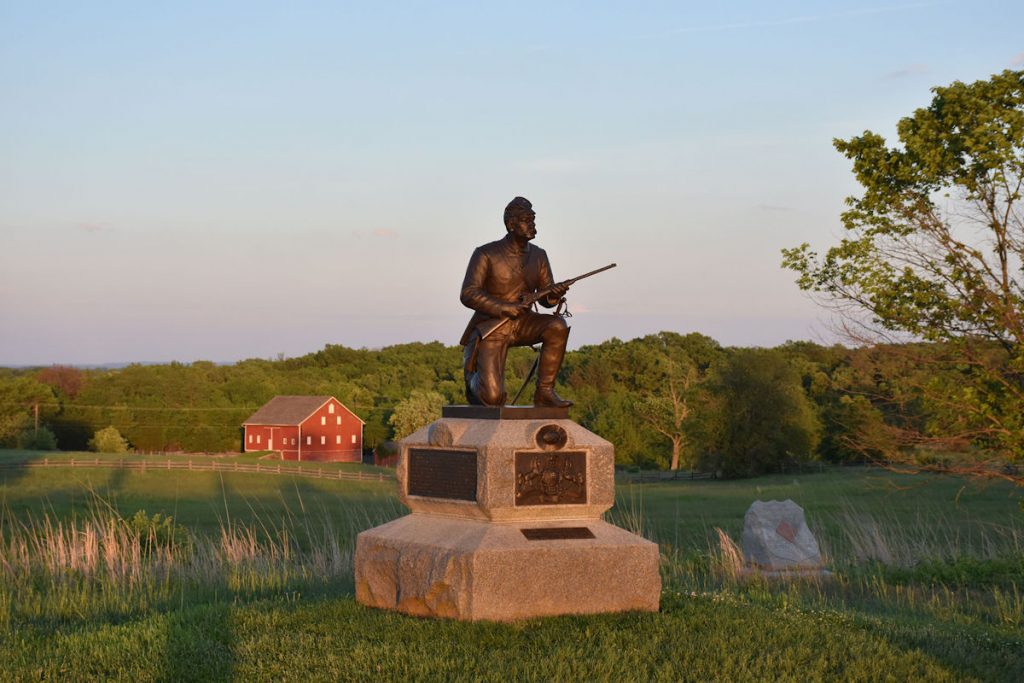
Gettysburg
Site of Historic Civil War Battle
July 01-02-03, 1863
(Visited May 2019)
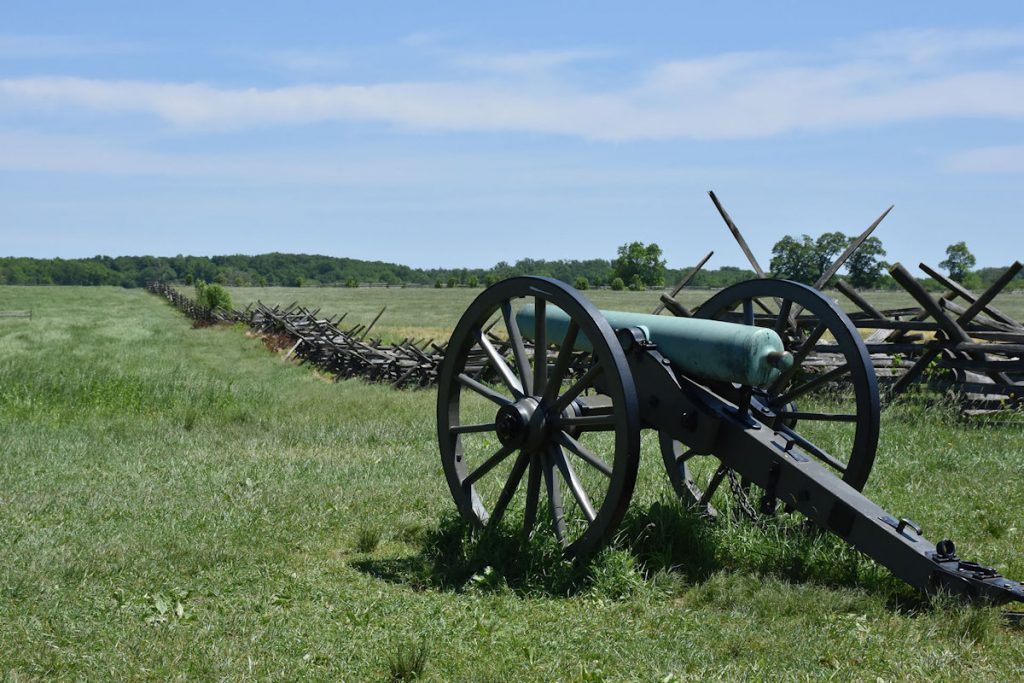
For many years, Beth and I have talked about visiting Gettysburg Battlefield National Military Park. Located in south-central Pennsylvania, it was a major turning point in the Civil War. General Robert E. Lee led his Confederate troops into Pennsylvania in an effort to demoralize the Union north and end the war. In a quickly developing series of events, his armies met General Meade’s Union army in the once-quiet town of Gettysburg, Pennsylvania. The next three days would turn into one of the bloodiest battles of the Civil War, with over 7,000 men killed and nearly 25,000 wounded. It was also the last major Confederate attack in the north.
I am not a historian, so I am going to refer you to Wikipedia for more detailed information:
https://en.wikipedia.org/wiki/Battle_of_Gettysburg
DAY 1 – July 01, 1863
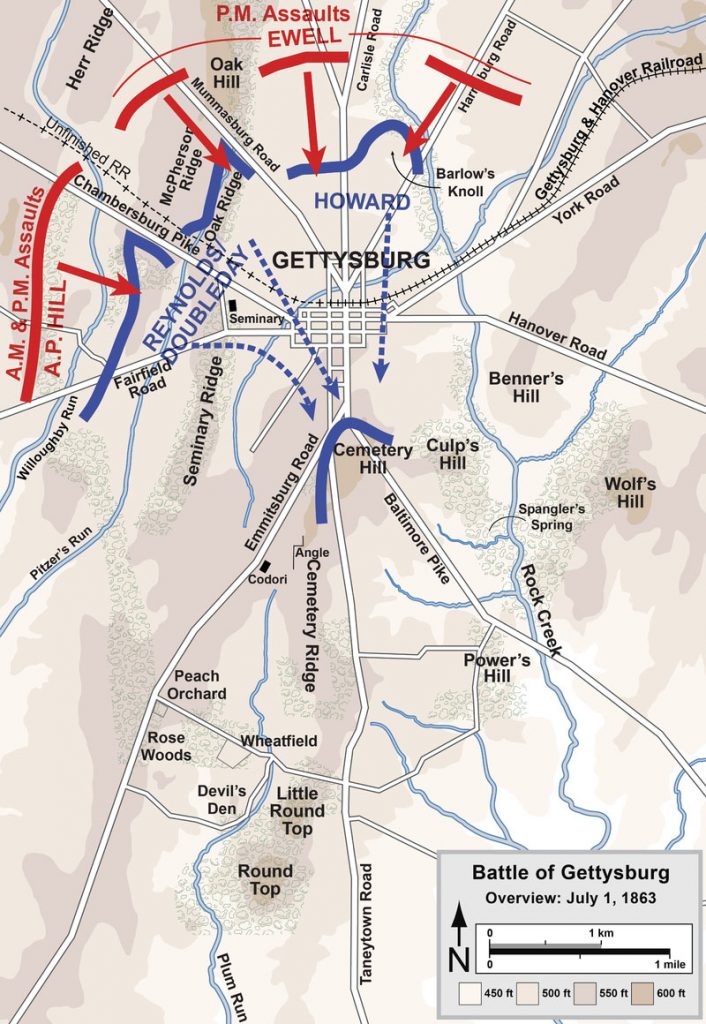
On the first day of the battle, Gen Robert E. Lee’s forces (red) approached Gettysburg and encountered Union forces (blue) northwest of town. The Union forces were outnumbered and retreated back through town to the high grounds of Culp’s Hill and Cemetery Ridge. At the same time, Union reinforcements were arriving and starting to build a defensive line on high ground that would extend for several miles.
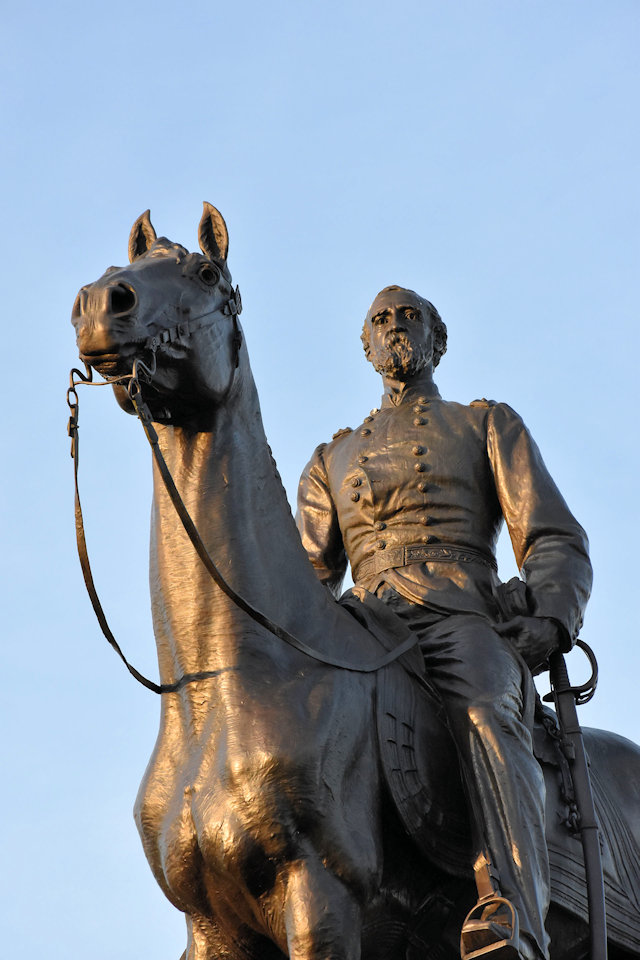
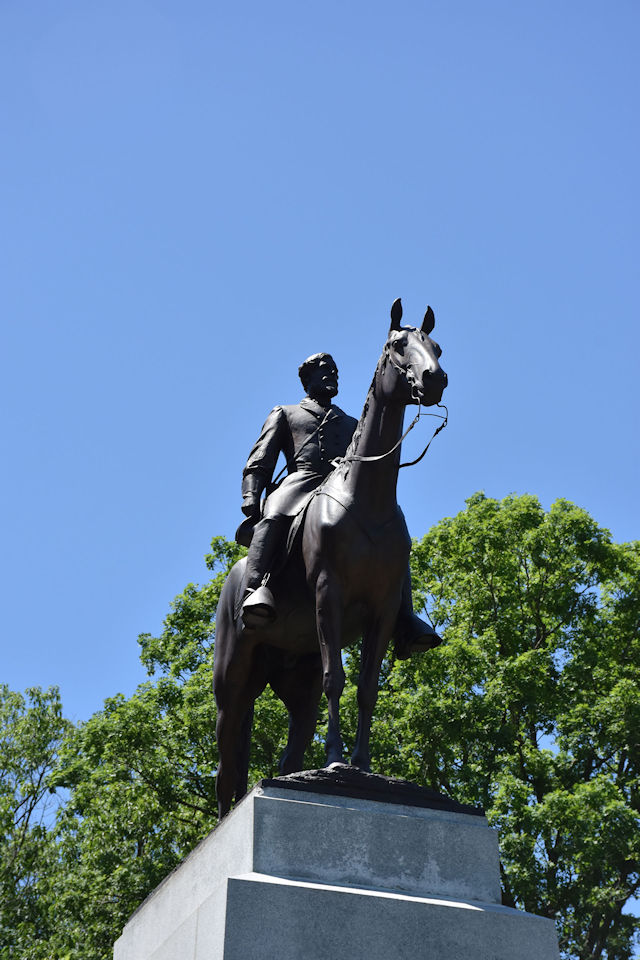

Seminary Ridge, and Herr Ridge on July 1st. Although greatly outnumbered, the Union forces slowed the advance of the Confederates
before retreating to defensive positions, allowing more time for Union reinforcements to arrive in Gettysburg.
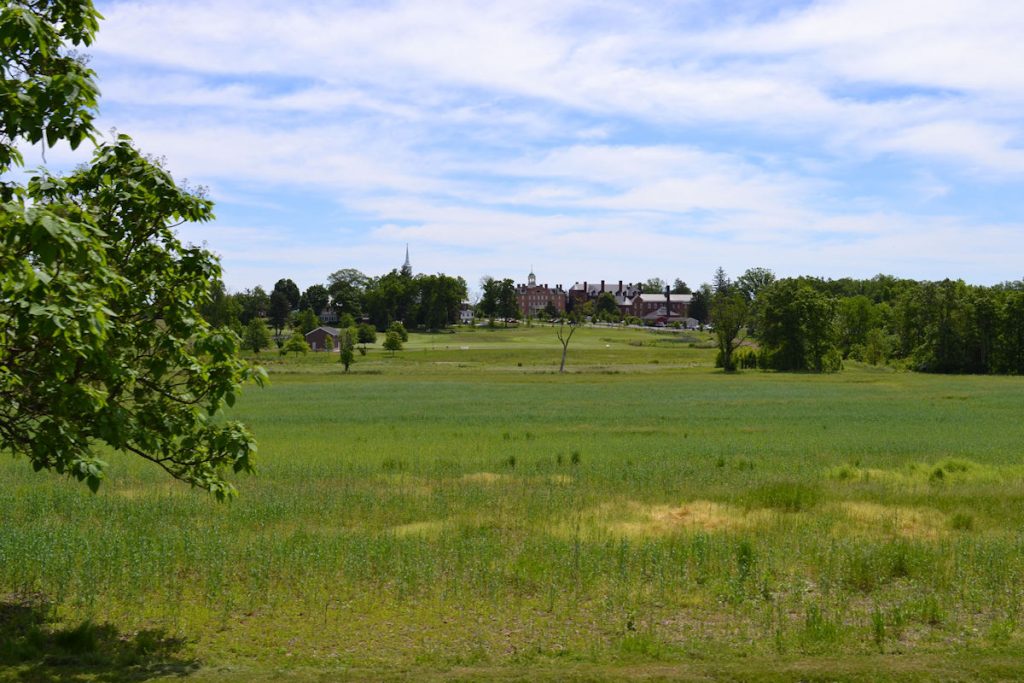
For more information:
https://en.wikipedia.org/wiki/Lutheran_Theological_Seminary_at_Gettysburg
http://unitedlutheranseminary.edu/
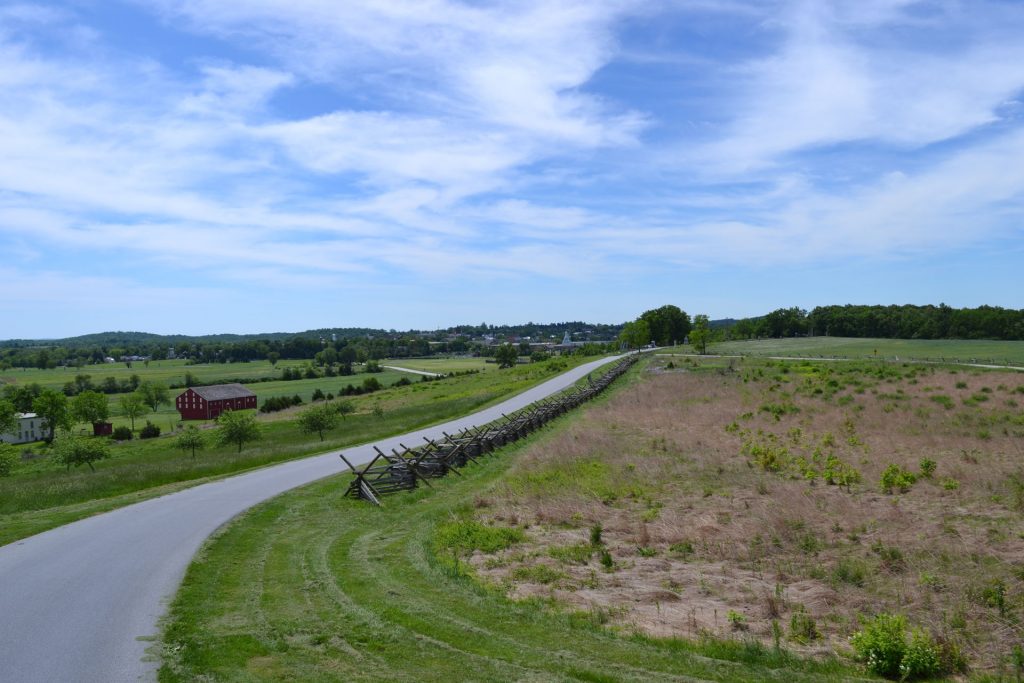
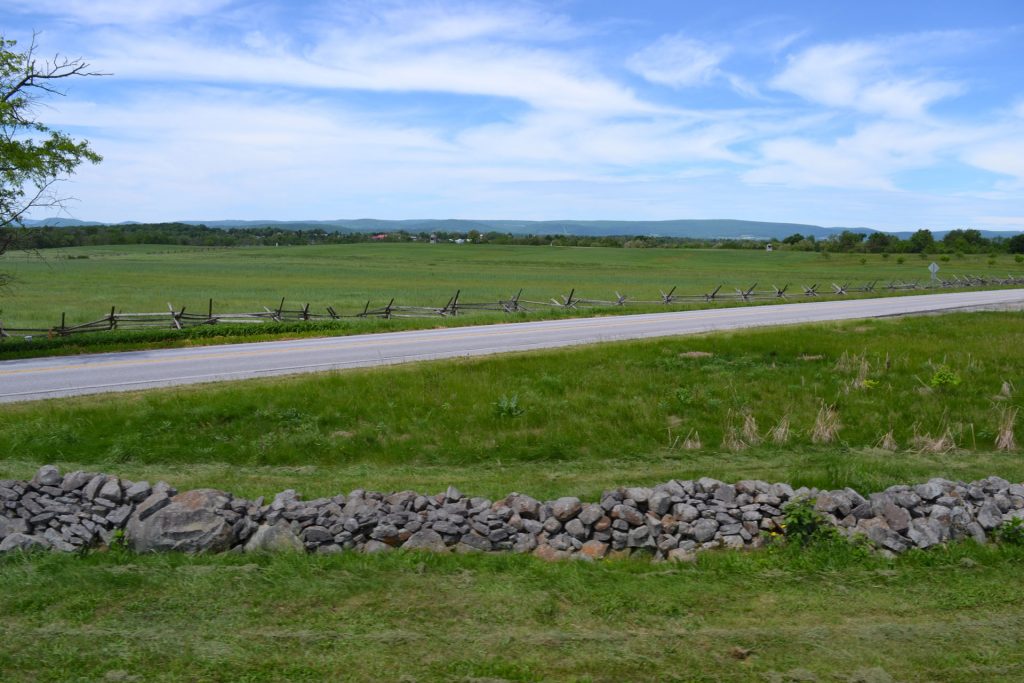
DAY 2 – July 02, 1863
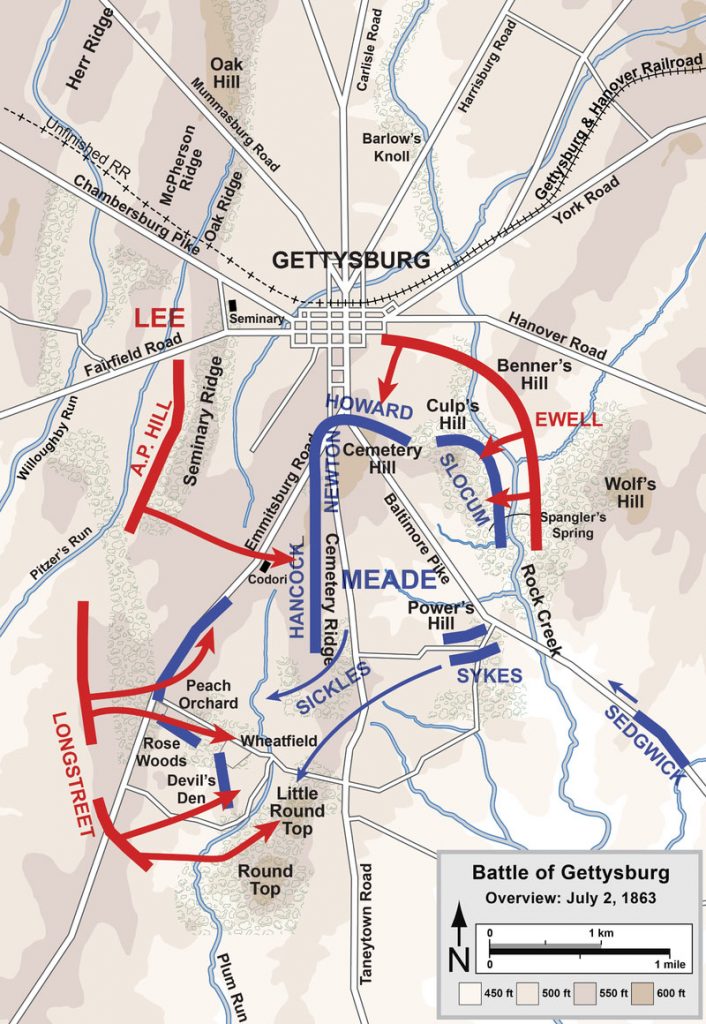
By the next day, the Union reinforcements had arrived and set up a defensive perimeter in a fish-hook-shaped line from Little Round Top south of town up to Cemetery Hill and around to Culp’s Hill. Union Major General Daniel Sickles, charged with defending Little Round Top, disobeyed orders and made a move that almost cost the Union victory at Gettysburg. He decided to move his troops off Little Round Top down to the Devil’s Den area, leaving the high ground unprotected. The Confederate troops saw this and circled around to attempt gaining the high ground. However, at the last minute, Union Brigadier General Gouverneur K. Warren recognized this mistake and sent in reinforcements to defend Little Round Top just moments before the Confederate forces arrived. If the Confederate forces had gained control of the high ground, the Battle of Gettysburg could have turned into a major Union loss.
Confederate forces also attacked Culp’s Hill on the northeast end of the Union line, but found it heavily defended and retreated.
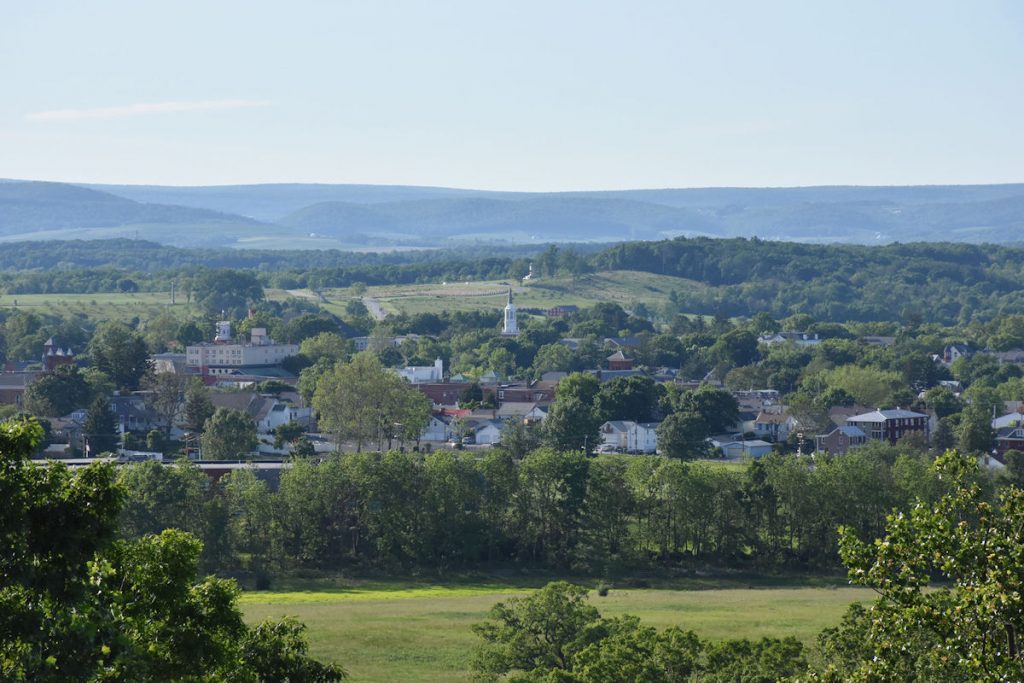
Off in the distance in the middle of the photo is the McPherson Ridge/Herr Ridge/Oak Hill area of the previous day’s battle.
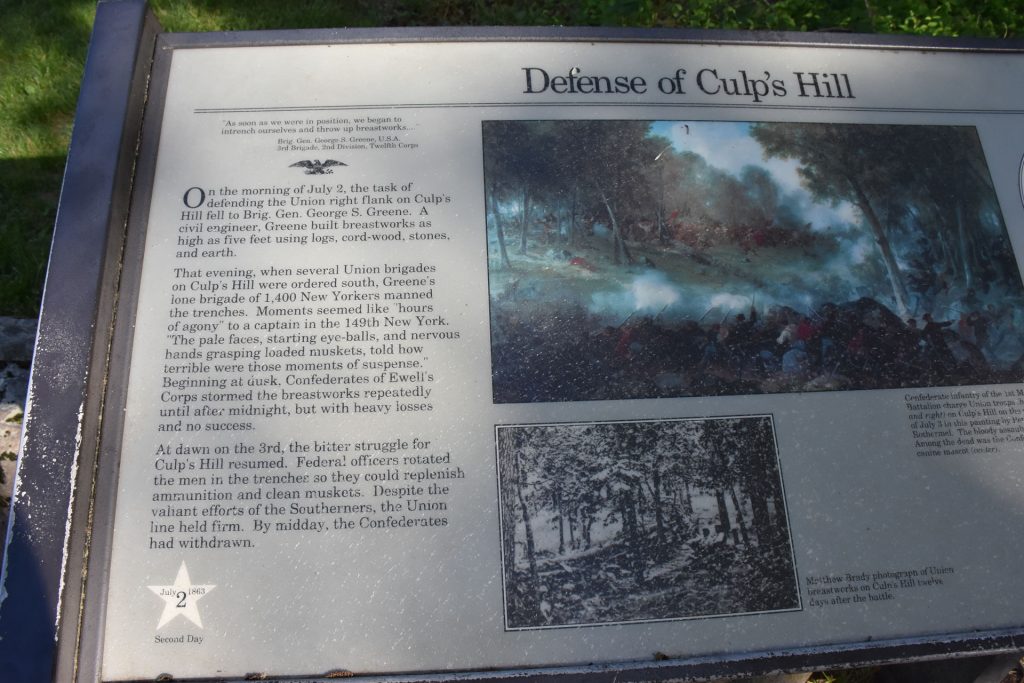
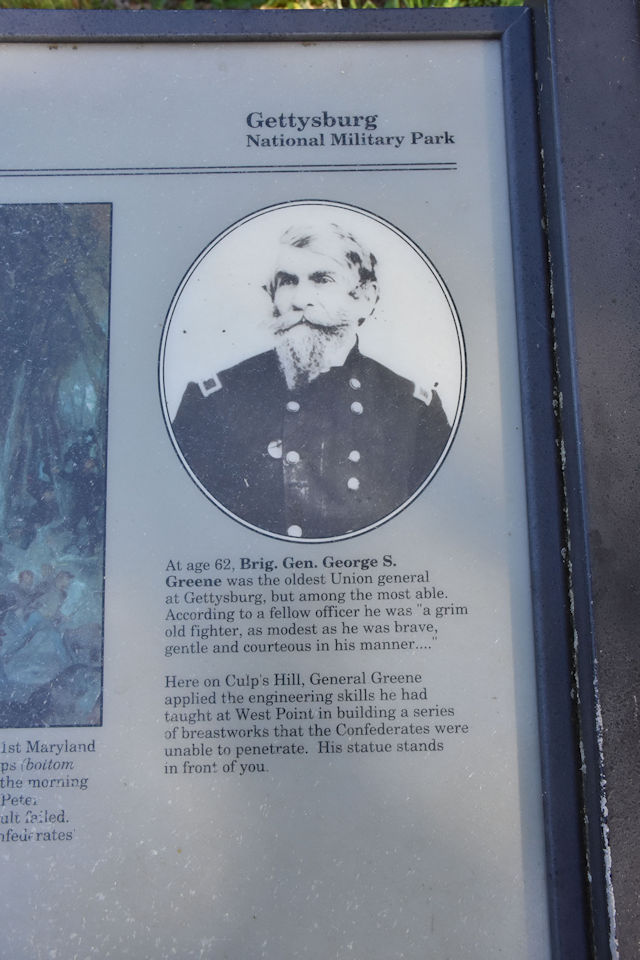
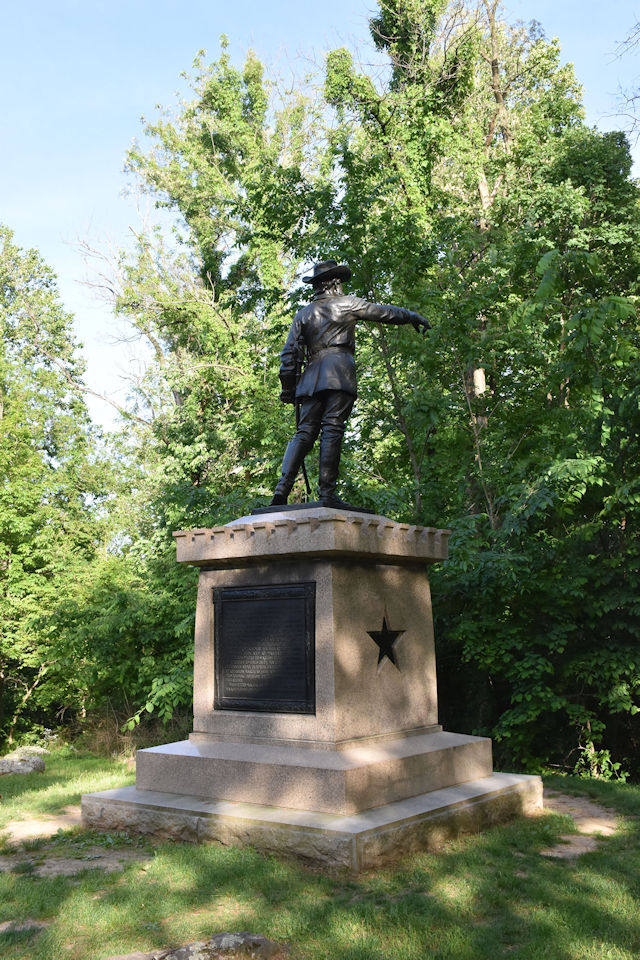
Meanwhile, over 20,000 Confederates waited in the woods across a large field from the Union forces.
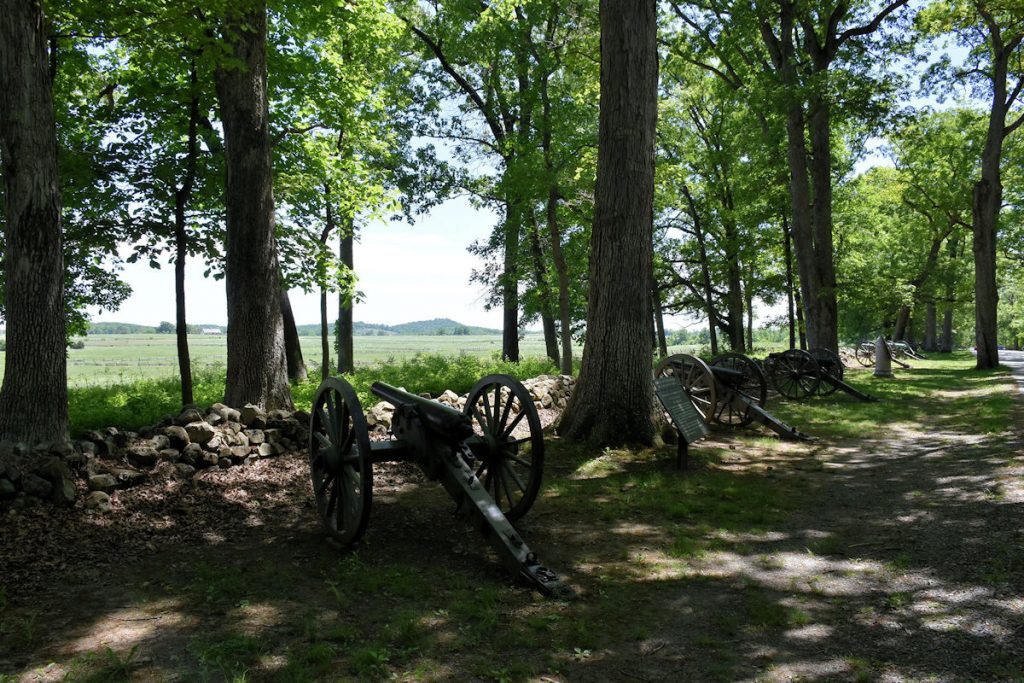
This went on for nearly two hours in an attempt to soften the Union defenses.
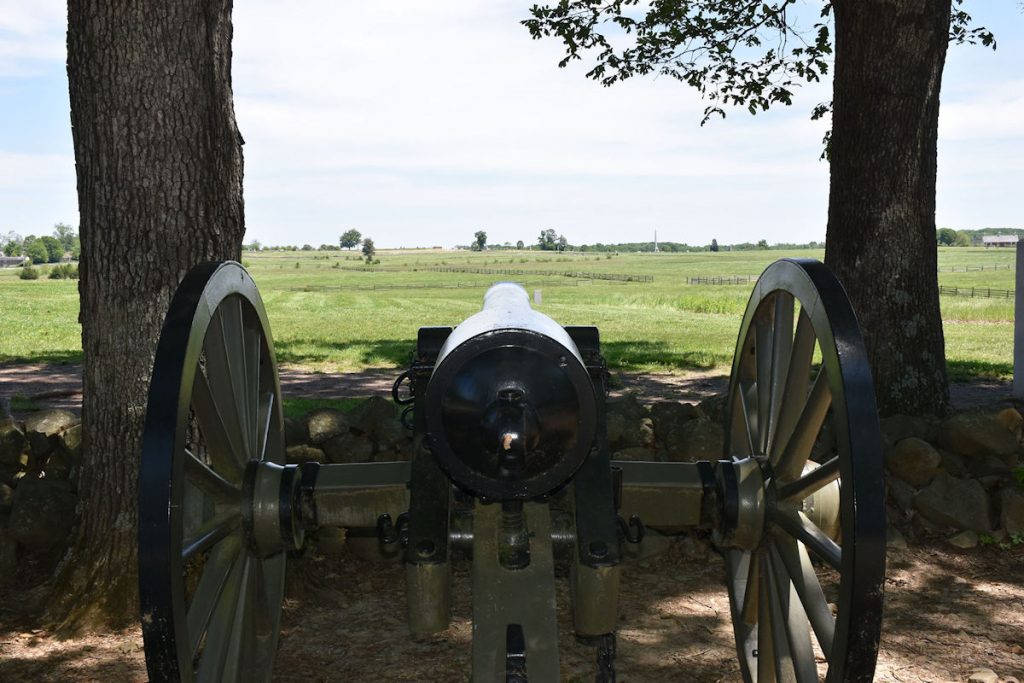
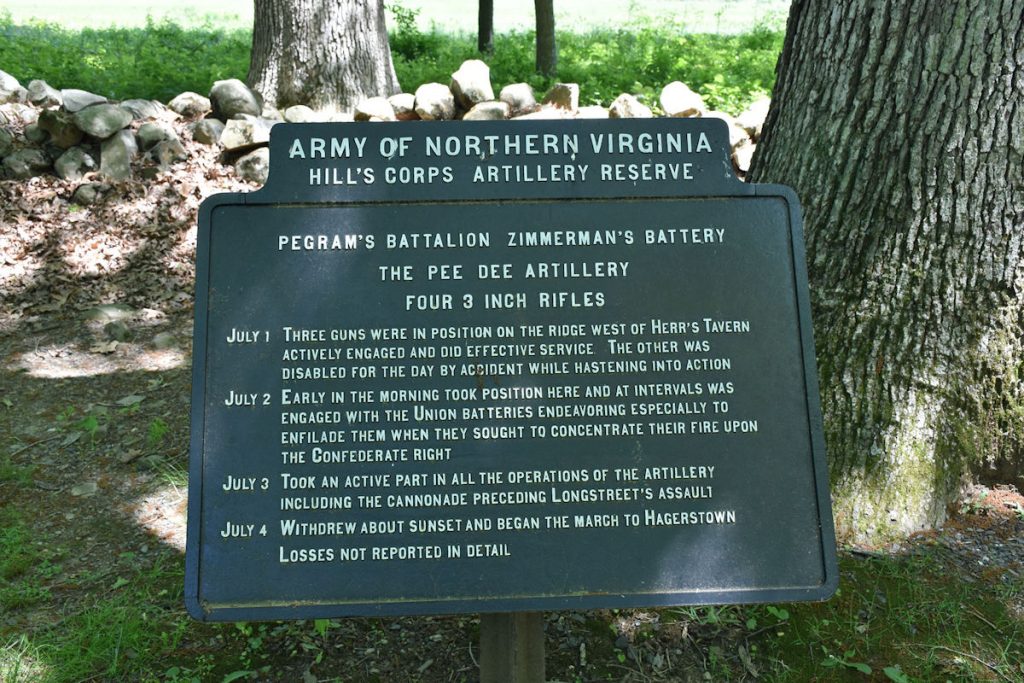


while being totally unprotected from incoming Union artillery and rifle fire.
Meanwhile, across the field at the Union lines…..

The Confederate forces were across the field to the left along the distant tree line.

General Warren’s statue is visible on the rock to the far right, below the large monument. (See below)
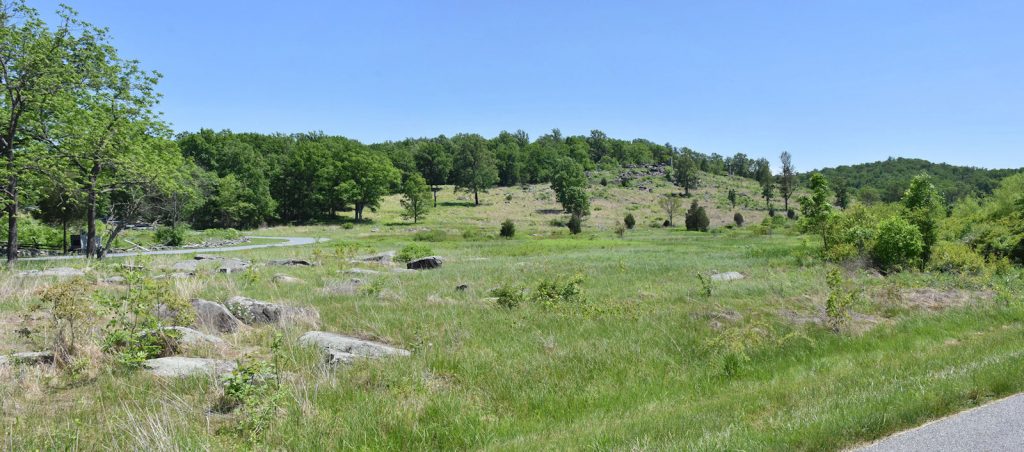
Not much of a hill, but enough to be strategically important.
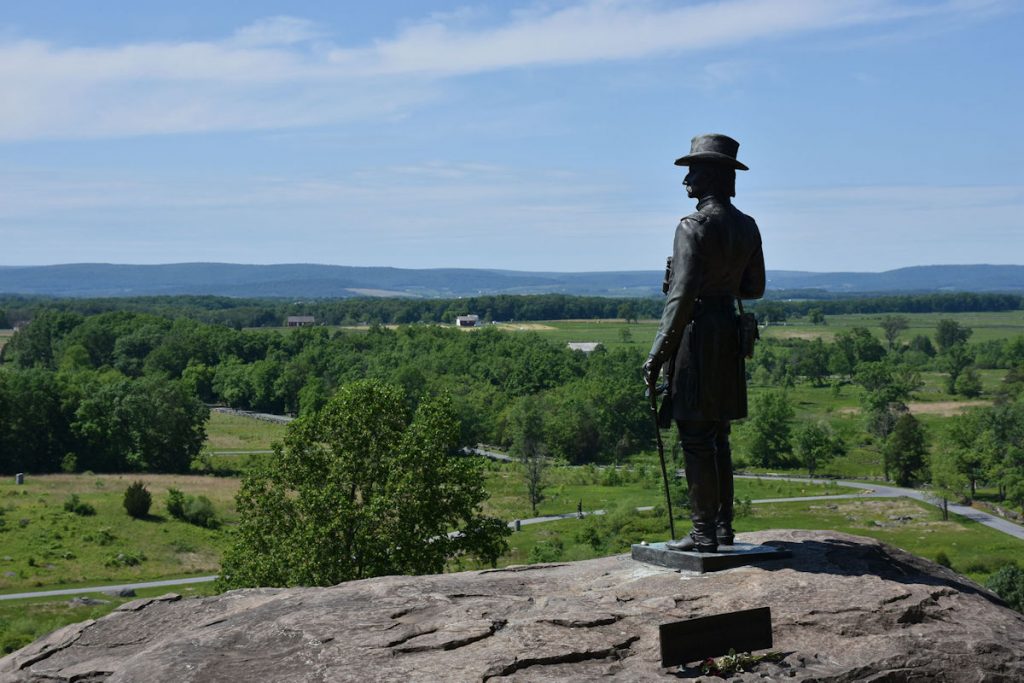
after detecting that it was unguarded and the Confederate forces were moving around in a flanking movement in
order to capture this high ground. He arrived just moments before the Confederates.
Here, he overlooks the Wheatfield, Peach Orchard, and Devil’s Den. The main battle on Day 3 took place in the fields to the distant right.
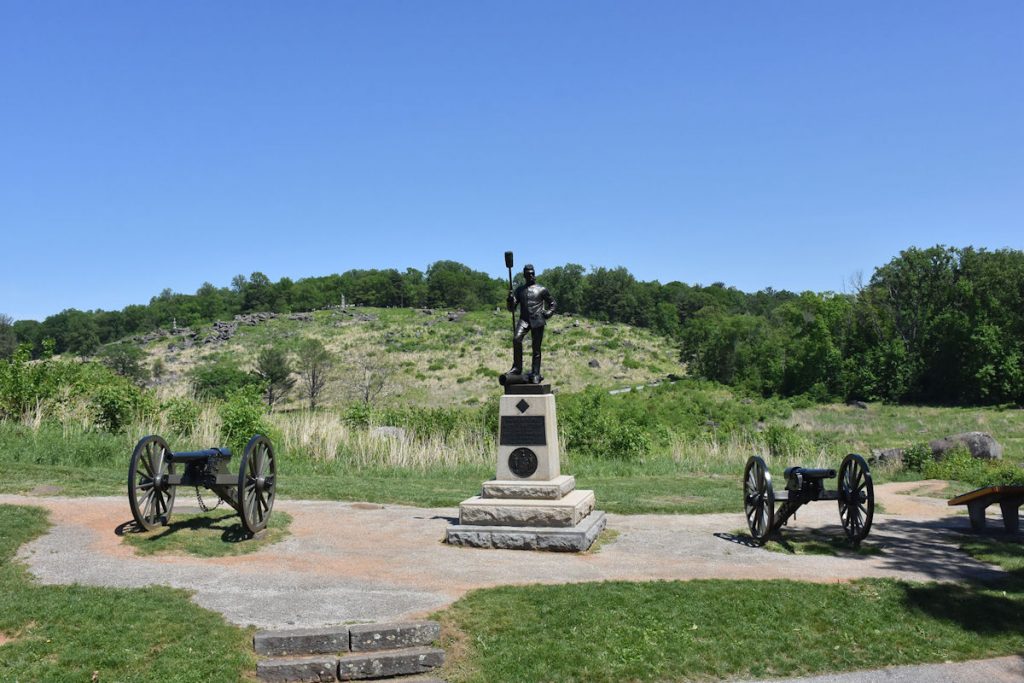
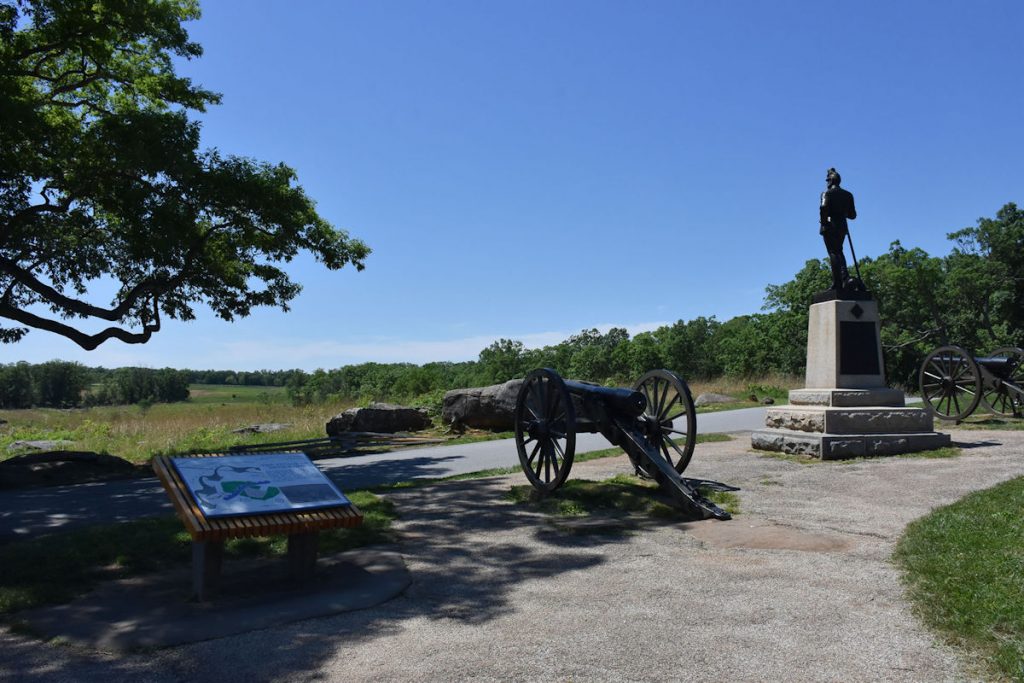
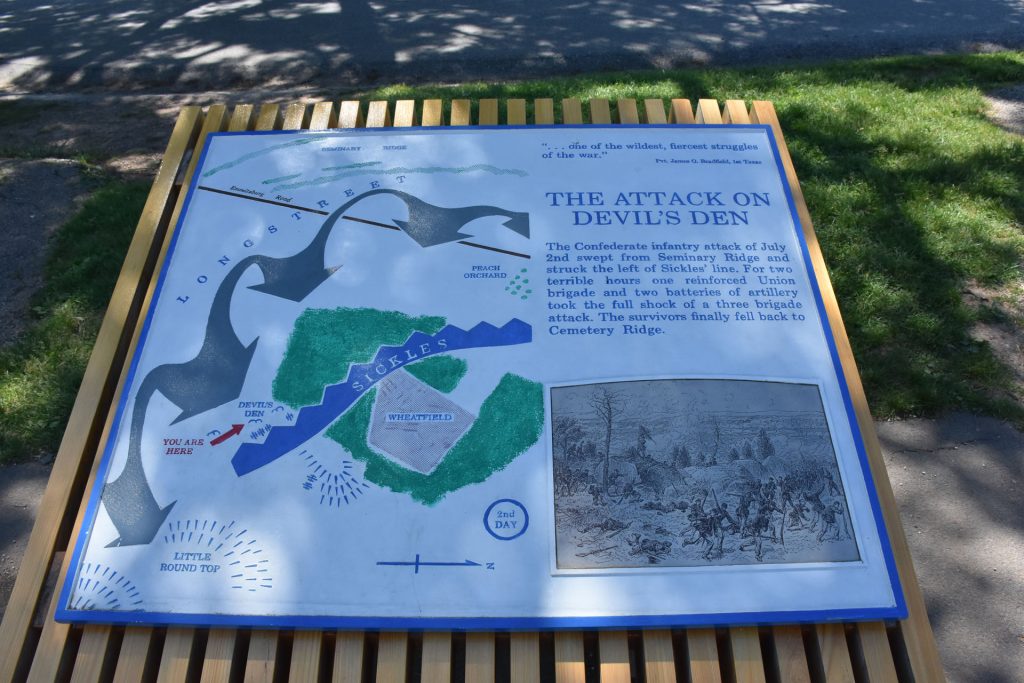
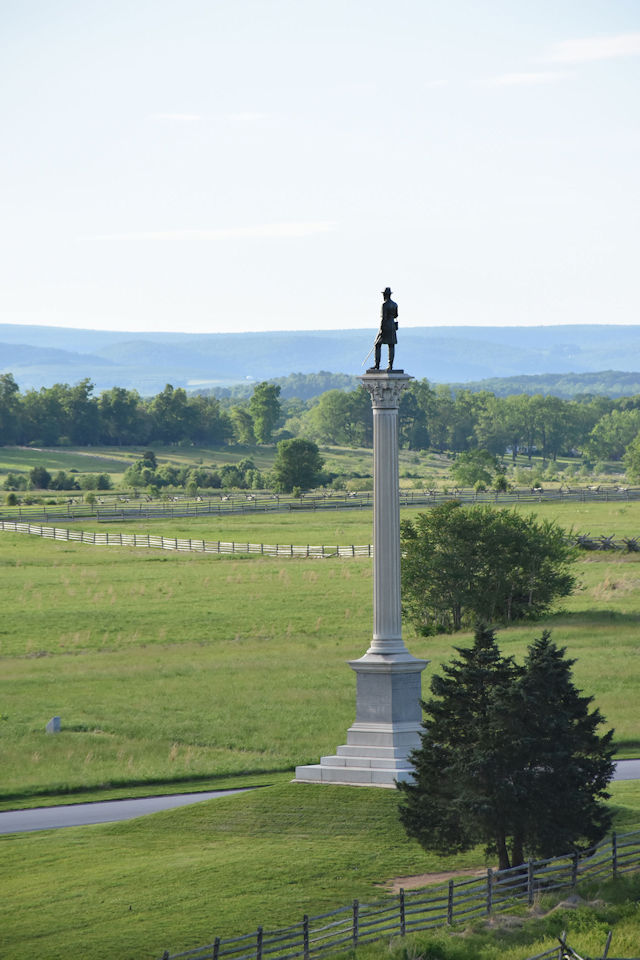
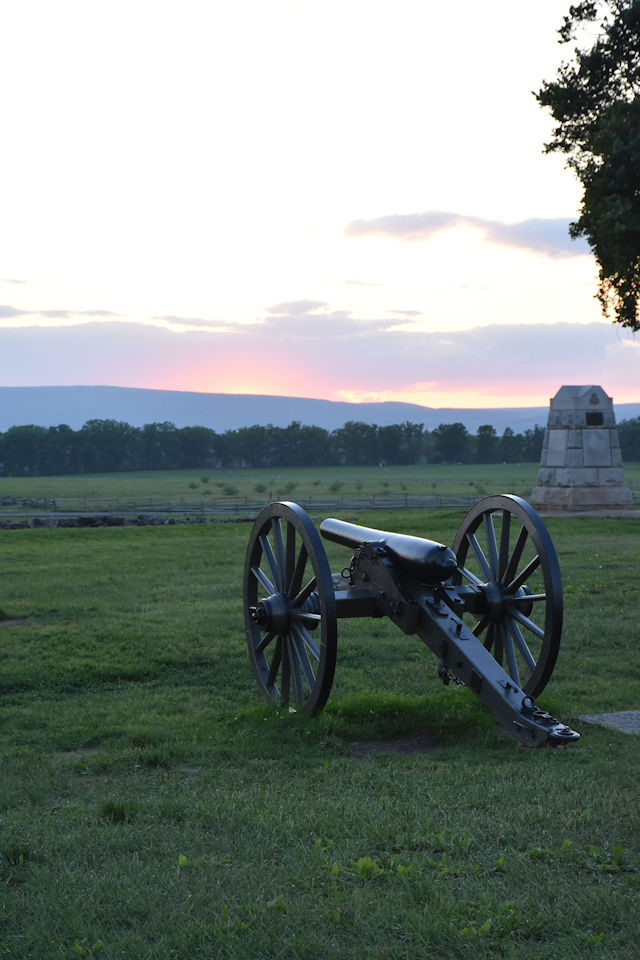
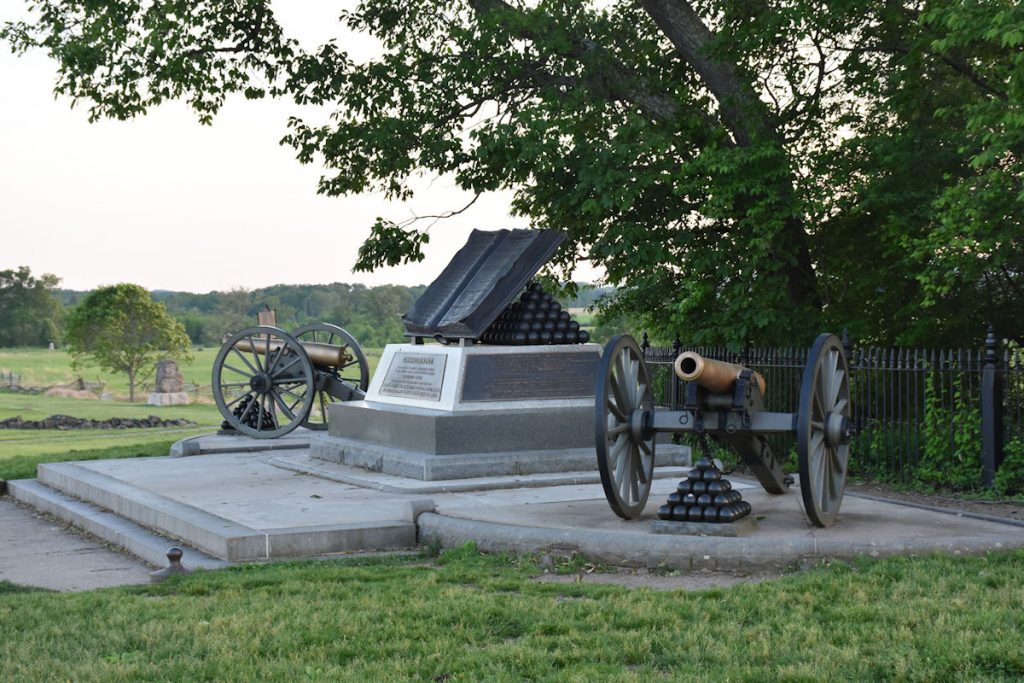
overlooking the field between Union and Confederate forces.
DAY 3 – July 03, 1863
General Robert E. Lee started the third day of battle by ordering an attack on Culp’s Hill. However, after several hours of fierce fighting, the Union line was holding strong. By mid-day, General Lee ordered a frontal attack on Cemetery Ridge. Many of his officers were hesitant and doubtful, since this involved marching the men in rows across an open field for over a mile while having no protection from Union forces who had set up strong defensive positions on the opposite side of the field. However, Lee ordered a long cannon barrage that he thought would soften up the Union line and offer less resistance. It turns out he was wrong.
As Major General George Pickett led what was to later be called “Pickett’s Charge” across the mile-wide field, Union artillery and rifle fire cut his forces to pieces. One small group managed to reach the Union line at a corner of a stone wall, but were quickly overpowered. This spot, known as the “Angle”, was also to become known as the “High Water Mark of the Confederacy”, as it was the closest the South came to achieving its goal of military victory.
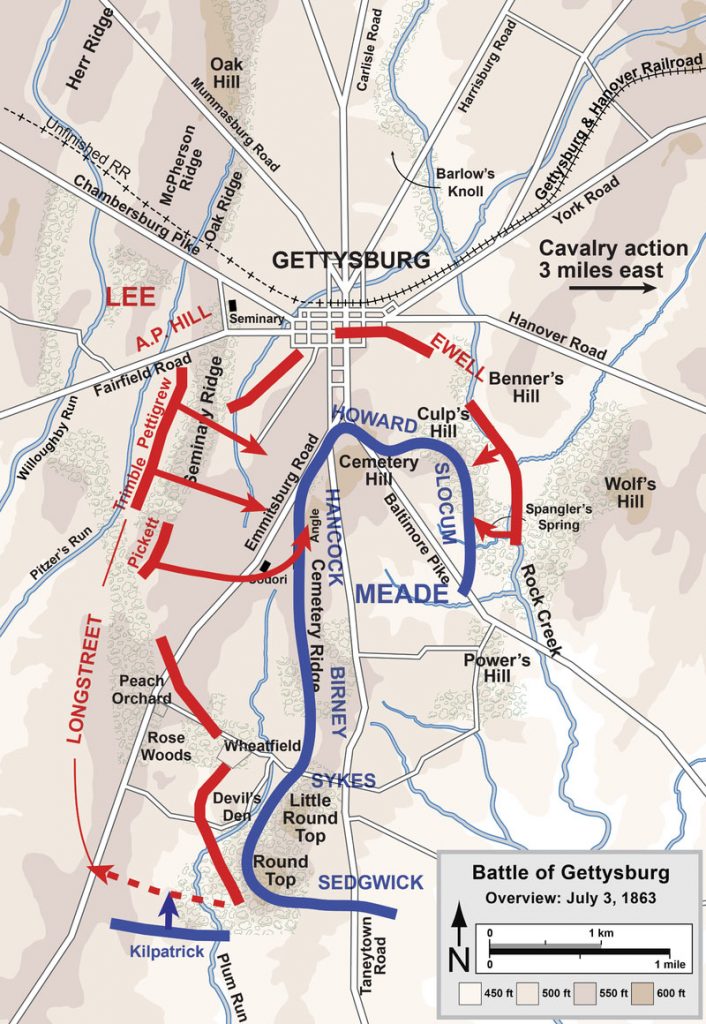
One of the very interesting stops in the Visitors’ Center is the Cyclorama. The painting is the work of French artist Paul Dominique Philippoteaux, and took a year and a half to complete (even with 5 aides), finishing in 1883. It depicts Pickett’s Charge on Day 3, the failed infantry assault that was the climax of the Battle of Gettysburg. The painting is a “Cyclorama”, a type of 360-degree cylindrical painting. The intended effect is to immerse the viewer in the scene being depicted, often with the addition of foreground models and life-size replicas to enhance the illusion. Among the sites documented on the painting are Cemetery Ridge, The Angle, and the Copse of Trees (“High Water Mark of the Confederacy”). The painting is 42 feet tall and 377 feet in circumference. The 20-minute show includes narration, lighting effects, and sound effects.
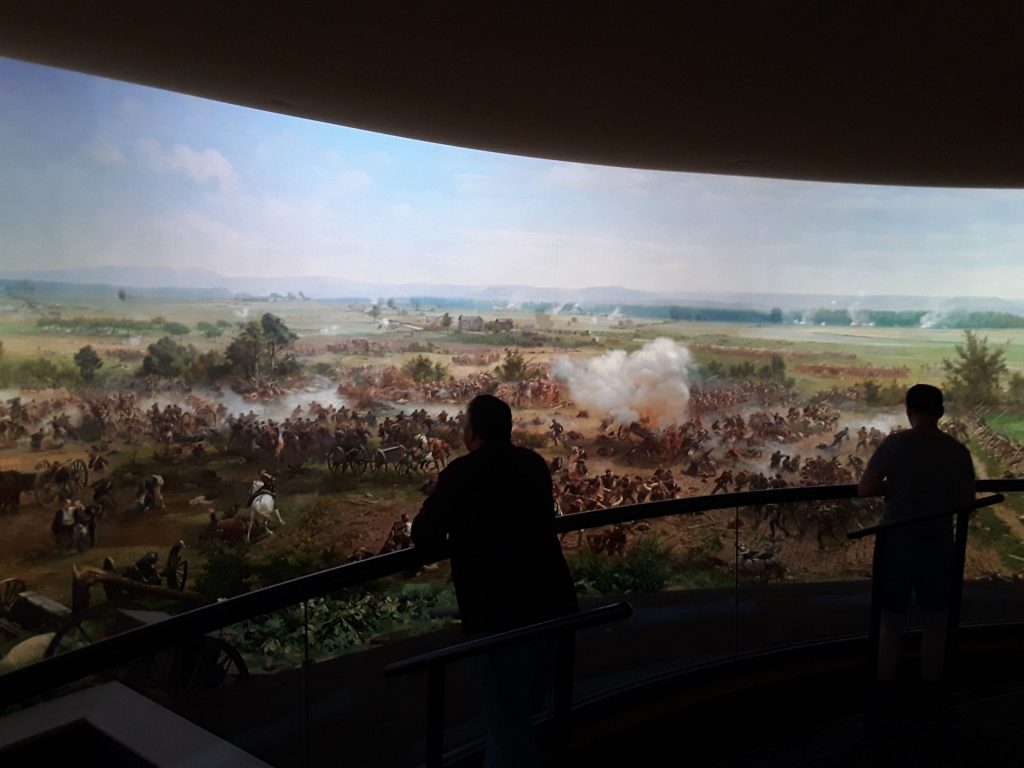

Confederates are attacking from the right in this painting from the Cyclorama.
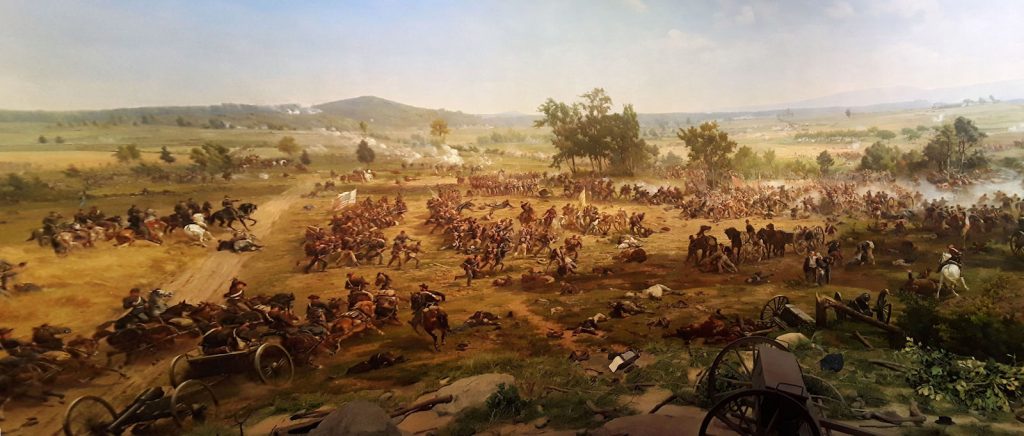
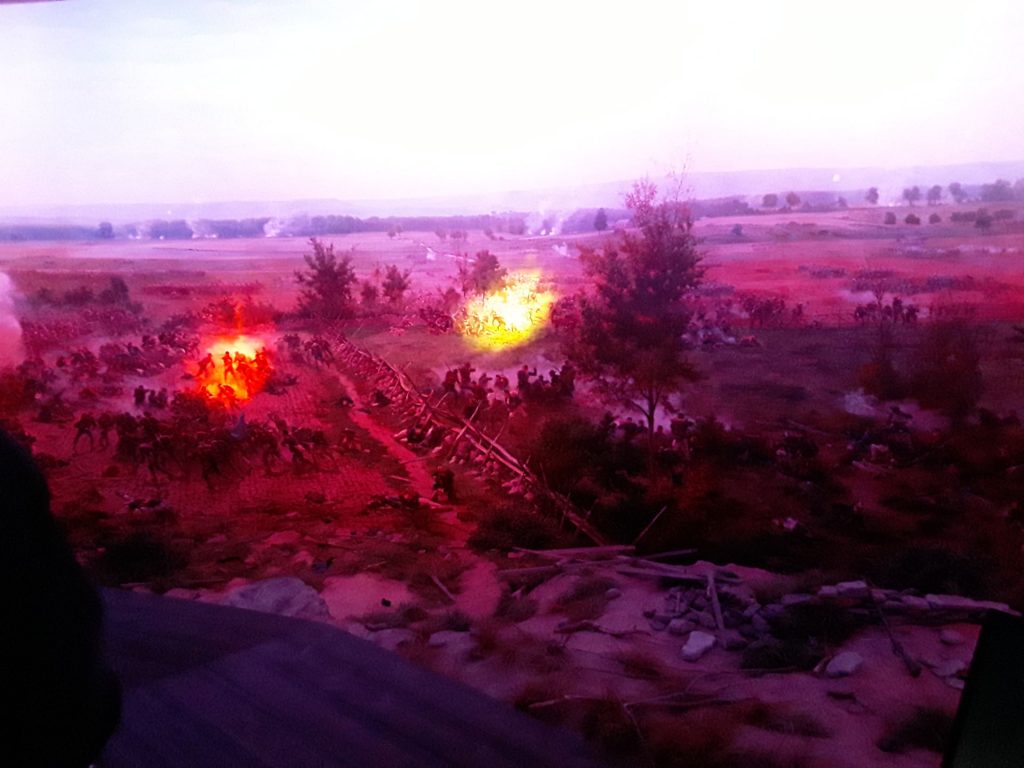
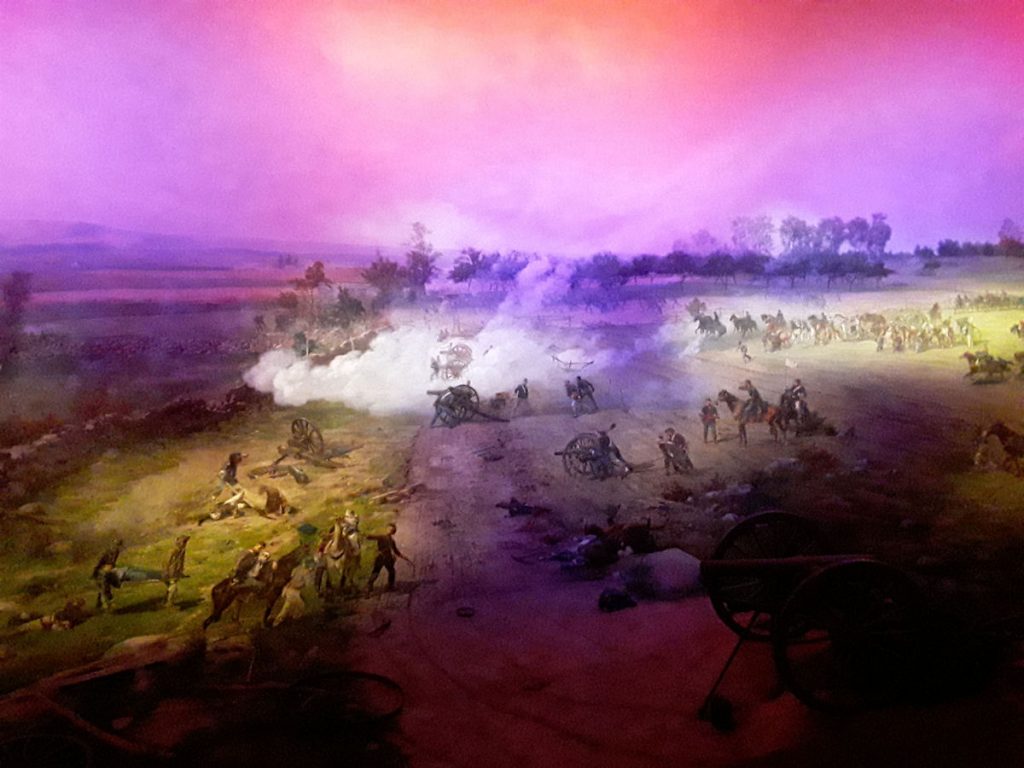
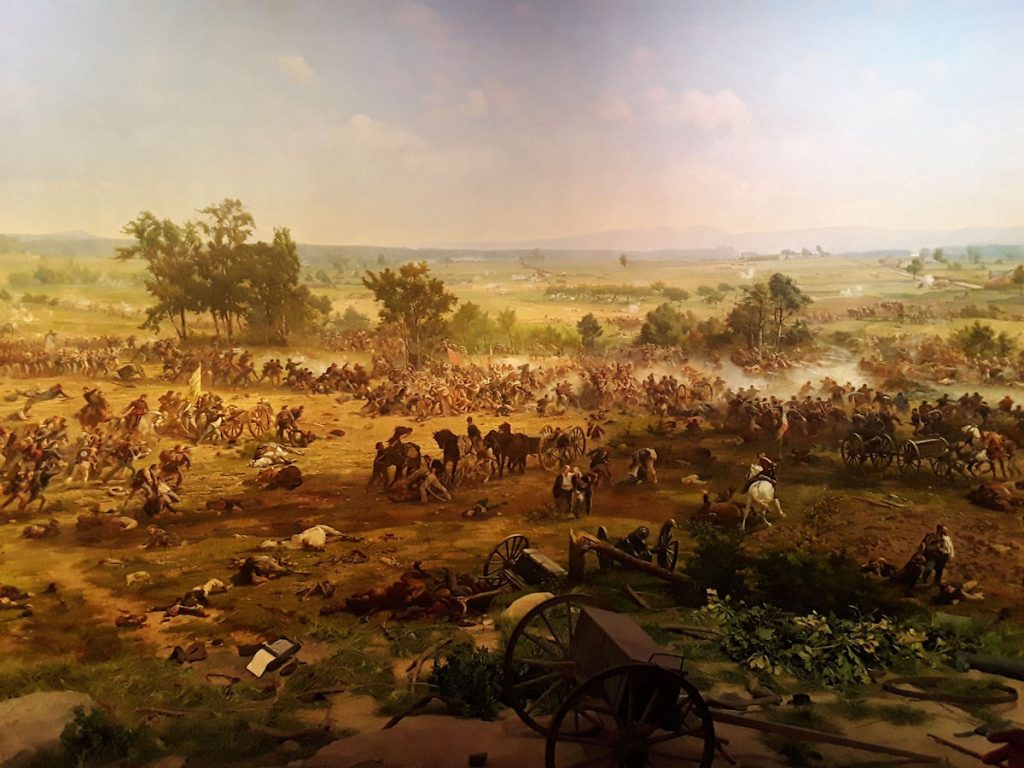
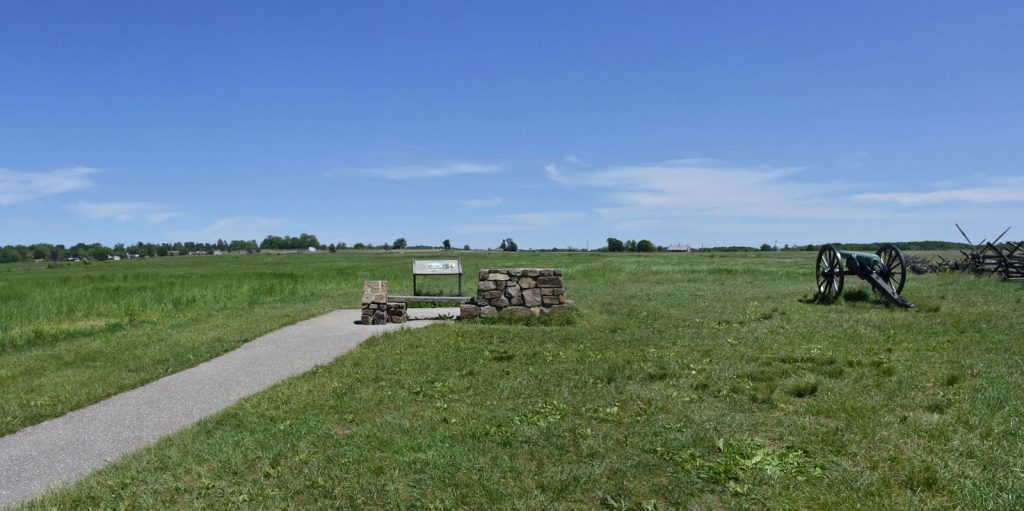
General Robert E. Lee. Trimble and Pettigrew also led units in the ill-fated attack, but are not often mentioned.

In the background, you can see several monuments to Union Army units from various states.
The large building in the rear at the far left is the Pennsylvania memorial.
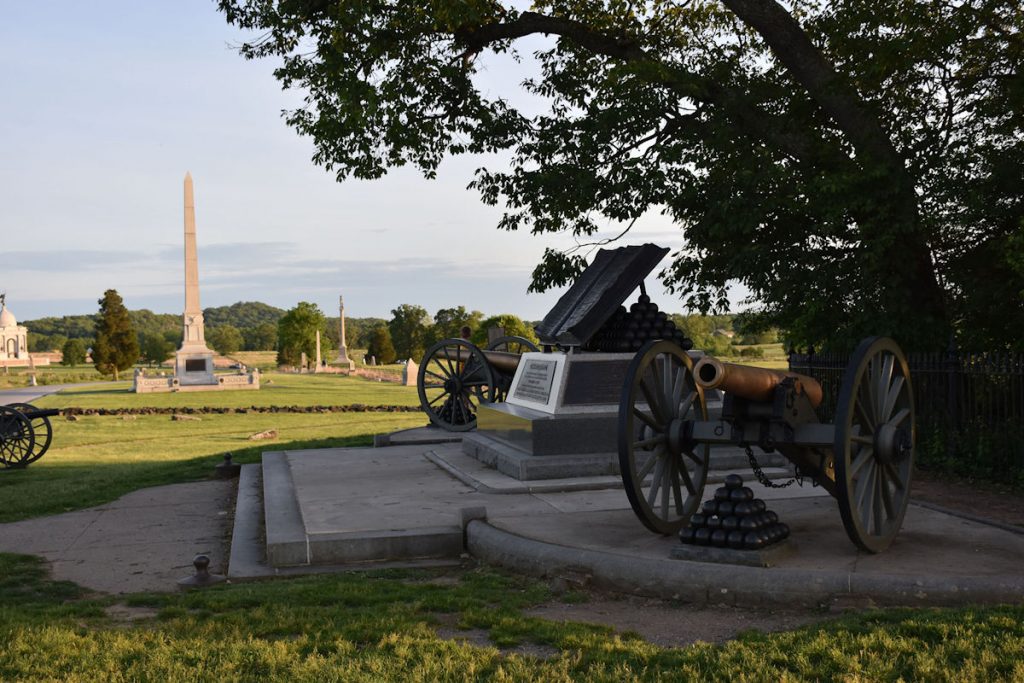
DAY 4 – July 04, 1863
Retreat
The armies stared at one another in a heavy rain across the bloody battlefields on July 4. General Lee had reformed his lines into a defensive position on Seminary Ridge and evacuated the town of Gettysburg. General Meade cautiously decided to not attack the remaining Confederate forces, a decision for which he would later be criticized. Both armies began collecting their dead and wounded. A proposal by General Lee for a prisoner exchange was rejected by General Meade.
On the evening of July 4, General Lee started his retreat to Virginia in a heavy rain. General Meade’s army followed, but the pursuit was only half-spirited. The rain-swollen Potomac River trapped Lee’s army on the north bank of the river, but they managed to cross just before Union forces caught up.
Aftermath of the Battle
The town of Gettysburg struggled for months caring for the thousands of wounded soldiers from both sides left behind, and burying over 7,000 dead soldiers left laying on the fields in the hot summer sun.
Hundreds of dead horses were stacked and burned, creating a sickening smell.
Four months later, President Abraham Lincoln presented the Gettysburg Address at the Gettysburg National Cemetery dedication.
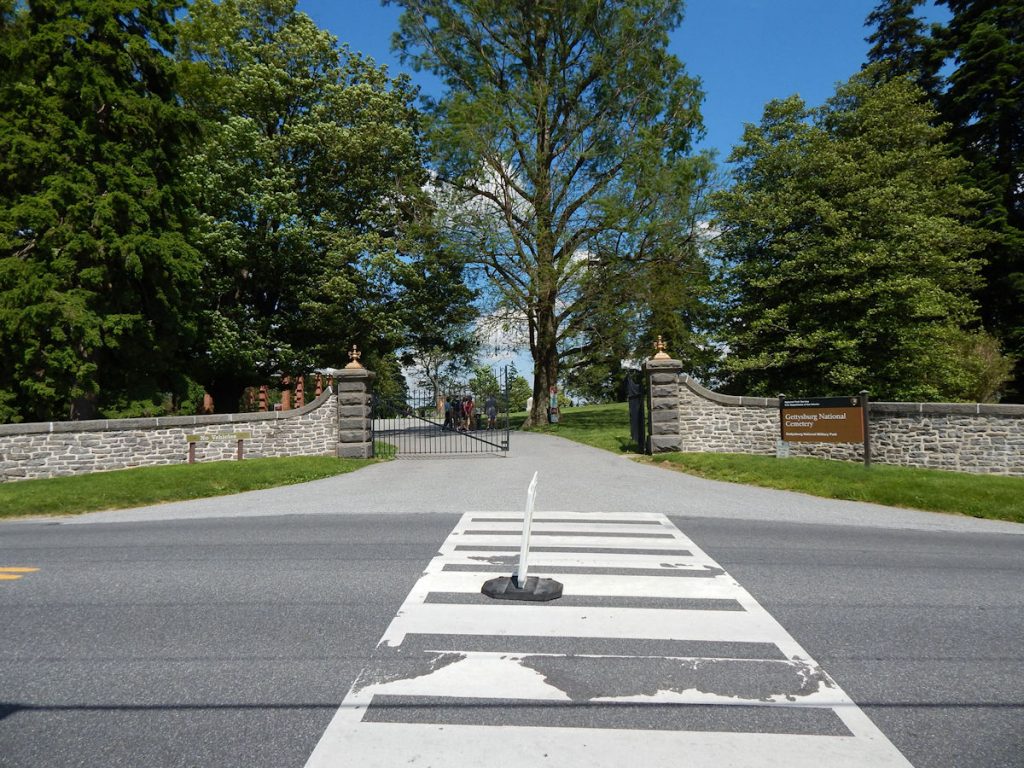
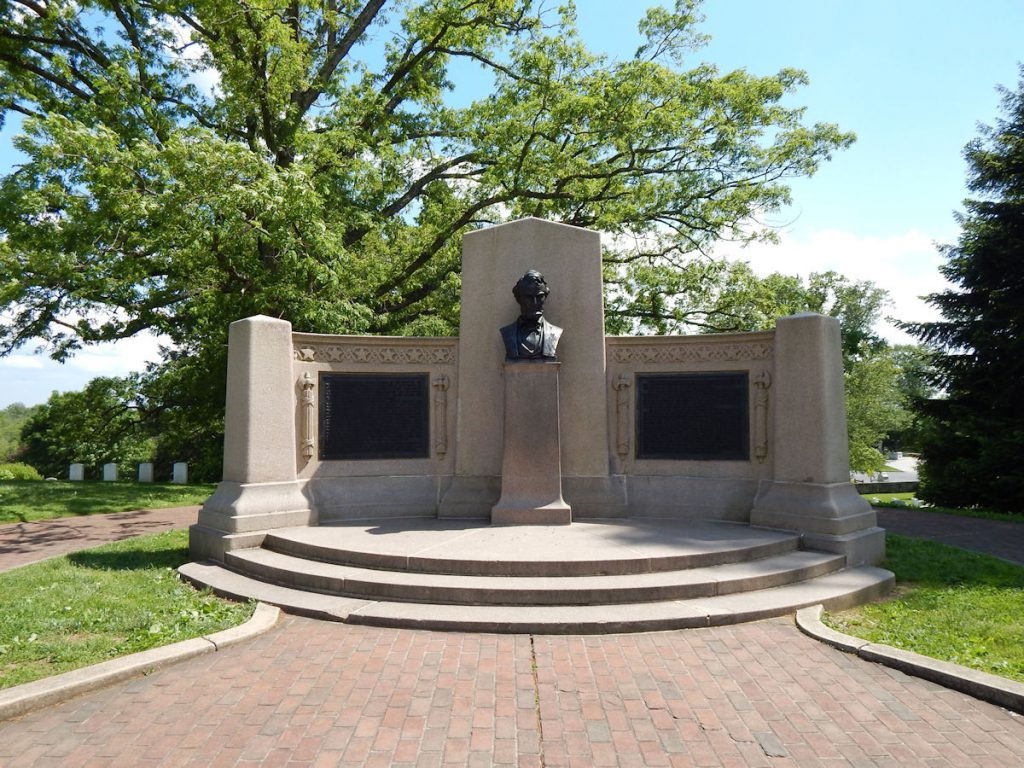
Four score and seven years ago, our fathers brought forth on this continent, a new nation, conceived in liberty, and dedicated to the proposition that all men are created equal.
Now we are engaged in a great civil war, testing whether that nation, or any nation so conceived and so dedicated, can long endure. We are met on a great battle-field of that war. We have come to dedicate a portion of that field, as a final resting place for those who gave their lives that that nation might live. It is altogether fitting and proper that we should do this.
But, in a larger sense, we cannot dedicate – we cannot consecrate – we cannot hallow – this ground. The brave men, living and dead, who struggled here, have consecrated it, far and above our poor power to add or detract. The world will little note, not long remember what we say here, but it can never forget what they did here. It is for us the living, rather, to be dedicated here to the unfinished work which they who fought here have thus far so nobly advanced. It is rather for us to be here dedicated to the great task remaining before us – that from these honored dead we take increased devotion to that cause for which they gave the last full measure of devotion – that we here highly resolve that these dead shall not have died in vain – that this nation, under God, shall have a new birth of freedom – and that government of the people, by the people, for the people, shall not perish from the earth.
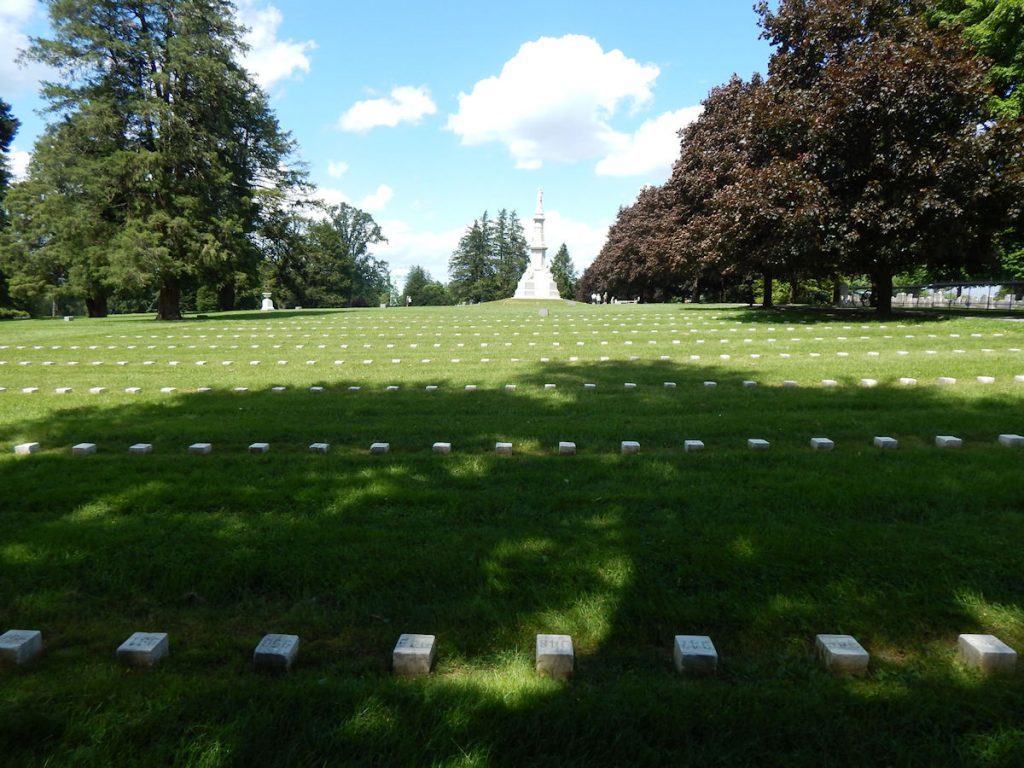
There are a total of 3,512 Civil War soldiers buried here, as well as several thousand
Spanish-American War and World War I veterans.
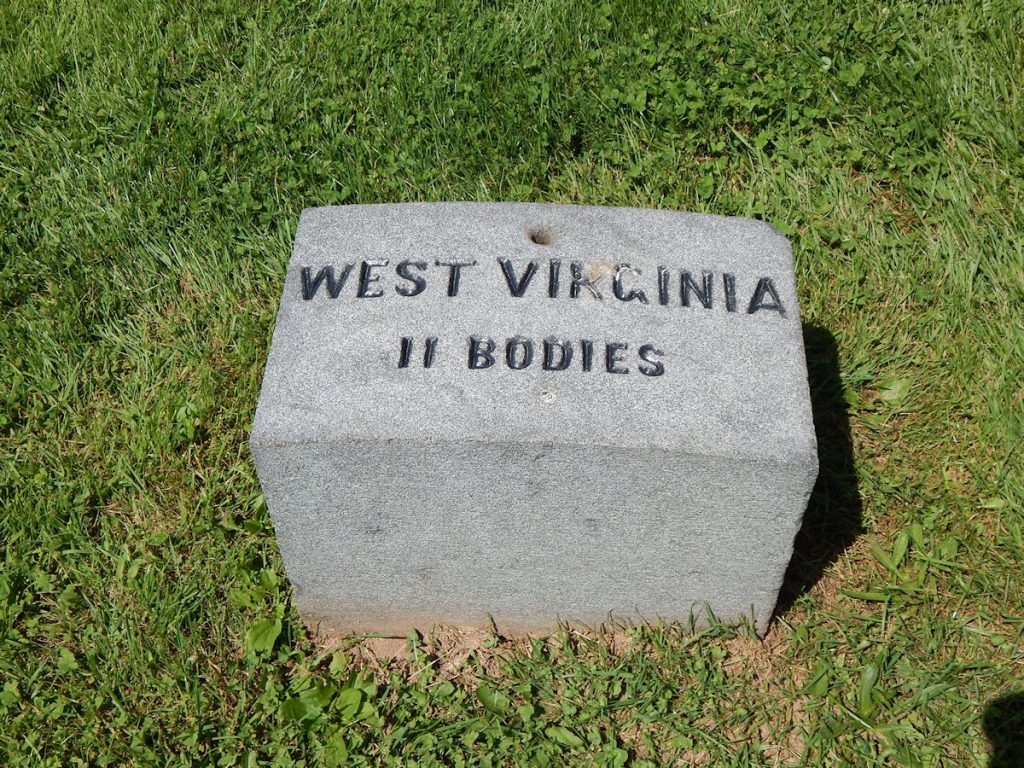
West Virginia was admitted to the Union as a separate state just 2 weeks before the Battle of Gettysburg.
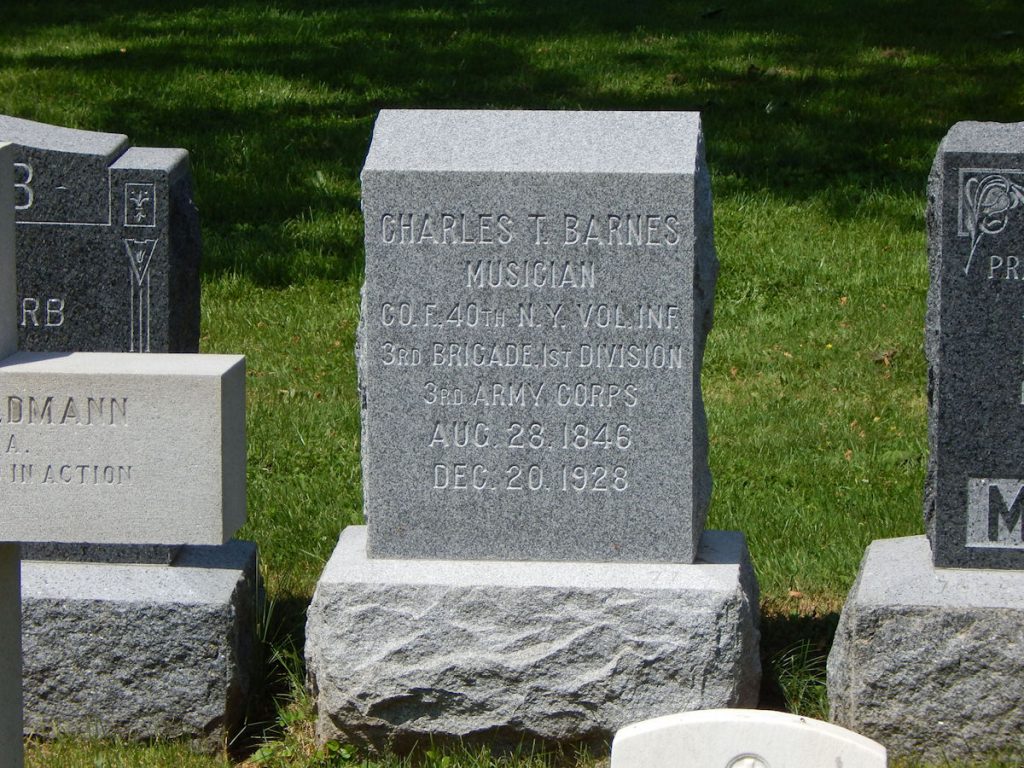


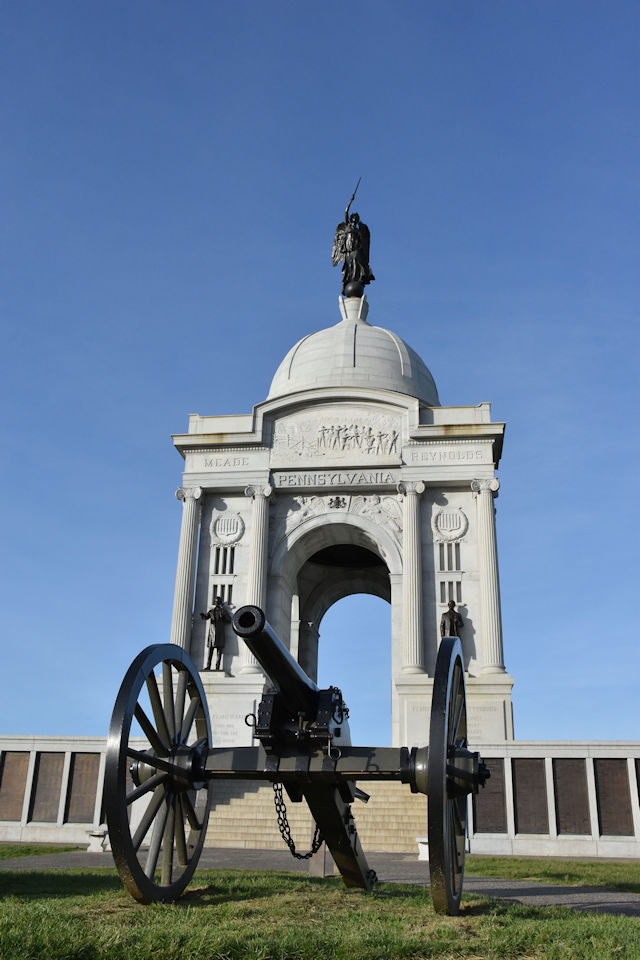
It is the largest memorial on the battlefield, in honor of the 34,530 Pennsylvania soldiers who fought here.
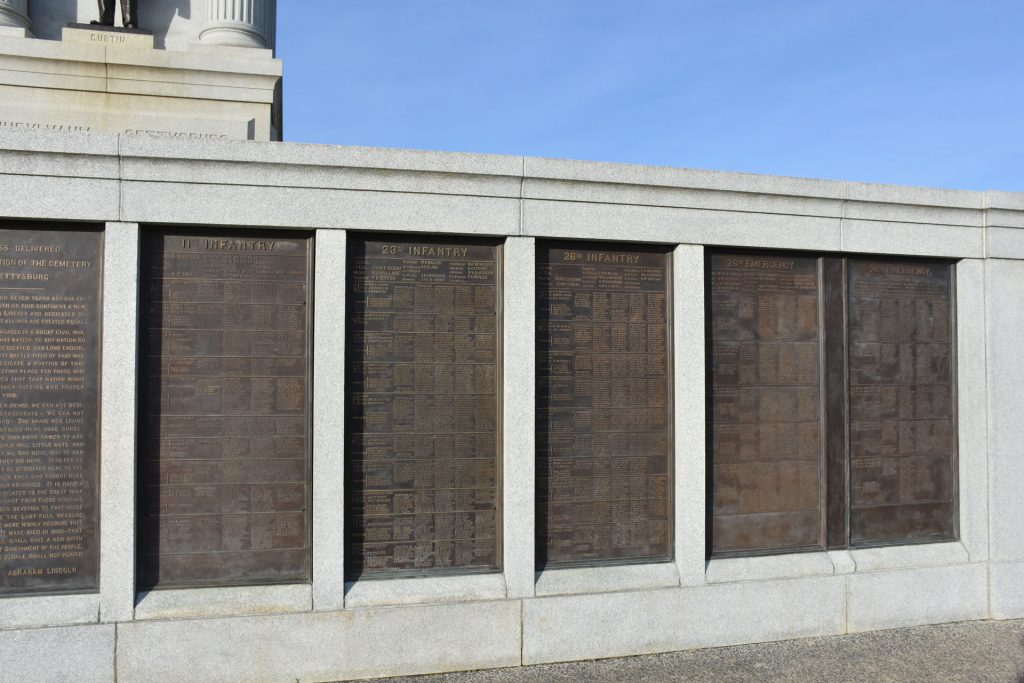
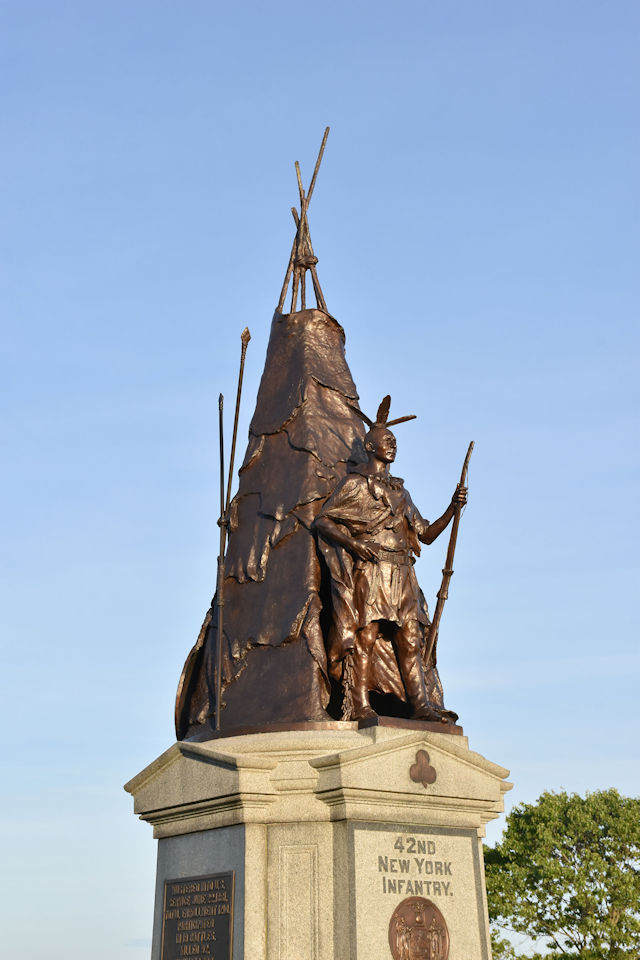
The New York 42nd Infantry – Tammany Regiment.
Organized by the Tammany Club, a New York Democratic Party Club.
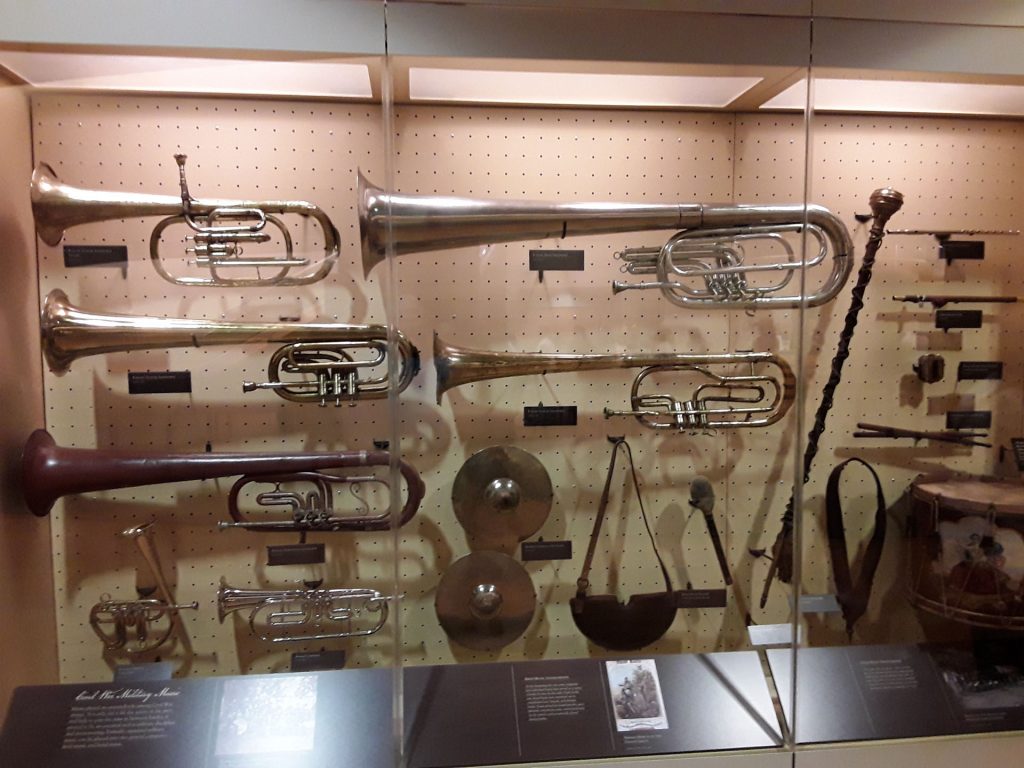
It was not uncommon to have a musician (drummer, bugler) or even a small band leading the the soldiers into battle.
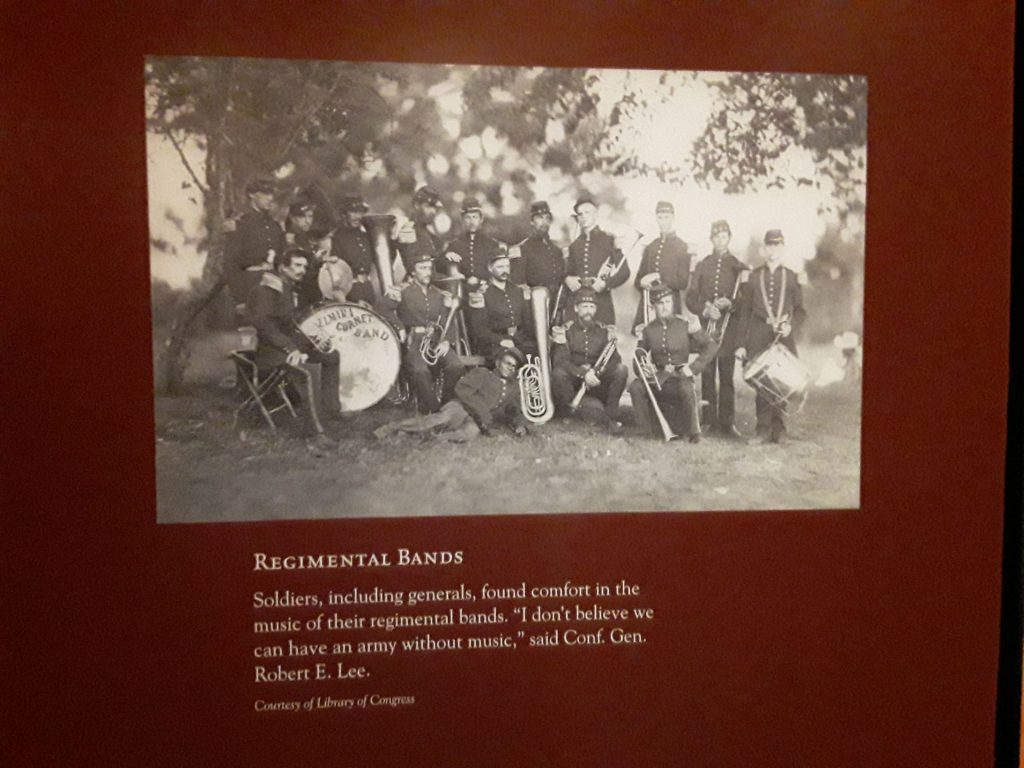
General Robert E. Lee says, “I don’t believe we can have an army without music.”
Of course, they lost the war.

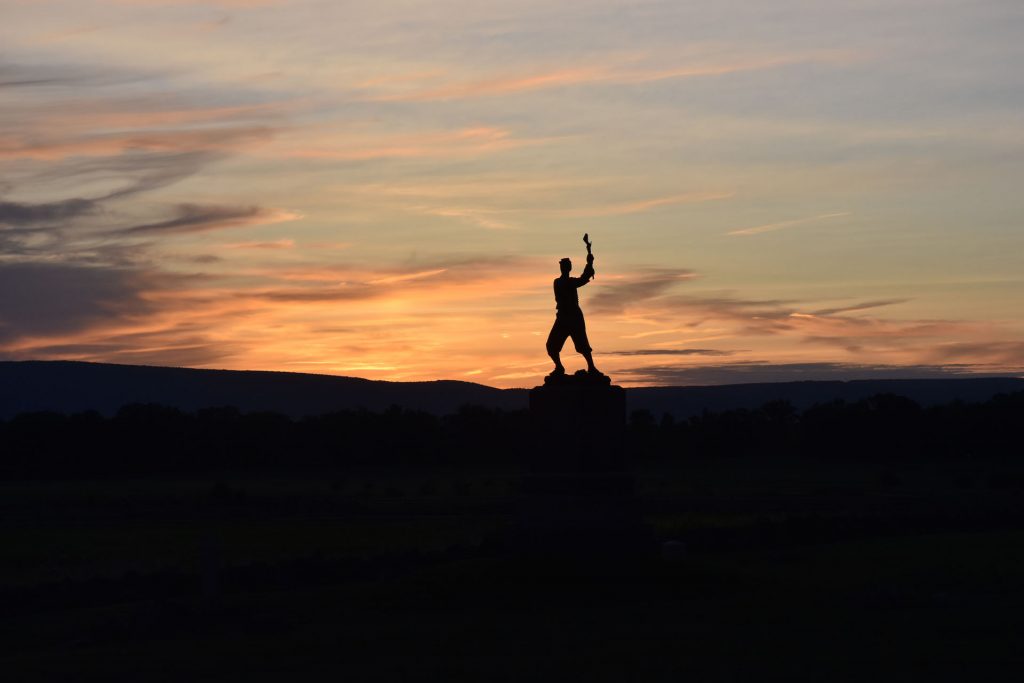
Outside of the Battlefield – Other Gettysburg Sights
There is much to see in the Gettysburg area besides the Battlefield and historical sites. Since the weather was beautiful, we got tickets for rooftop seats on the double-decker tour bus the first morning we were there. This 2-hour tour through downtown and the battlefields allowed us to get oriented the first day and choose where we wanted to go back and visit.
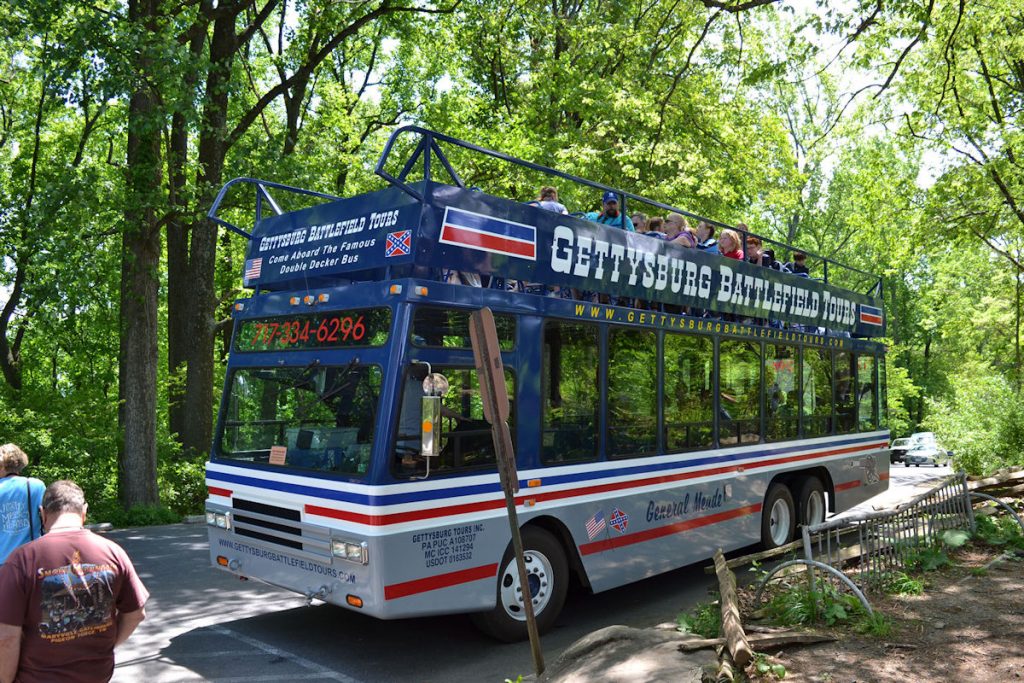
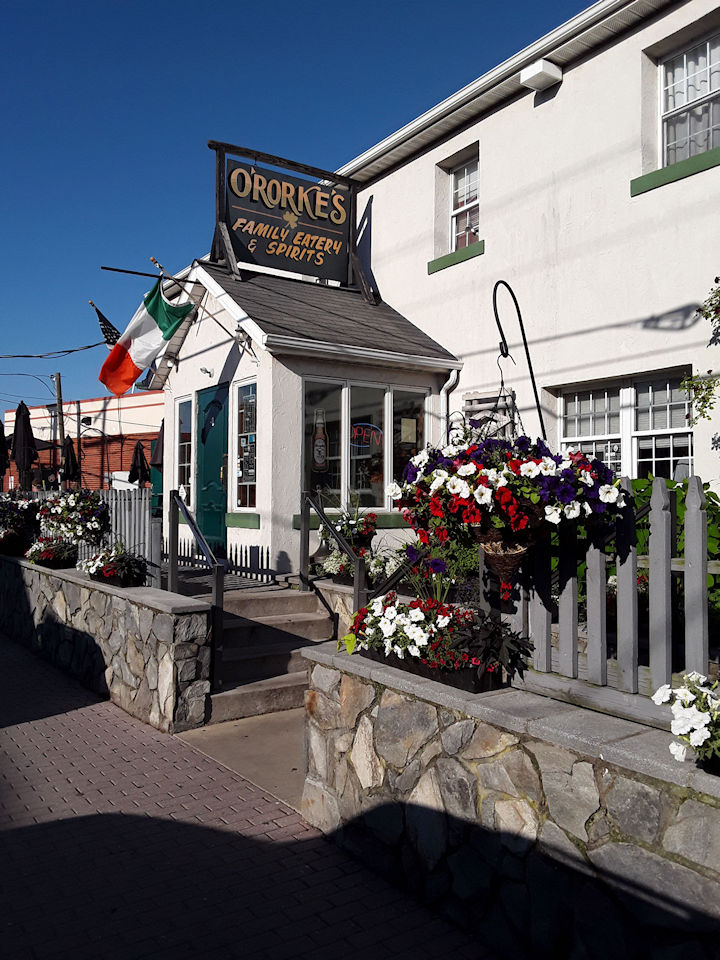
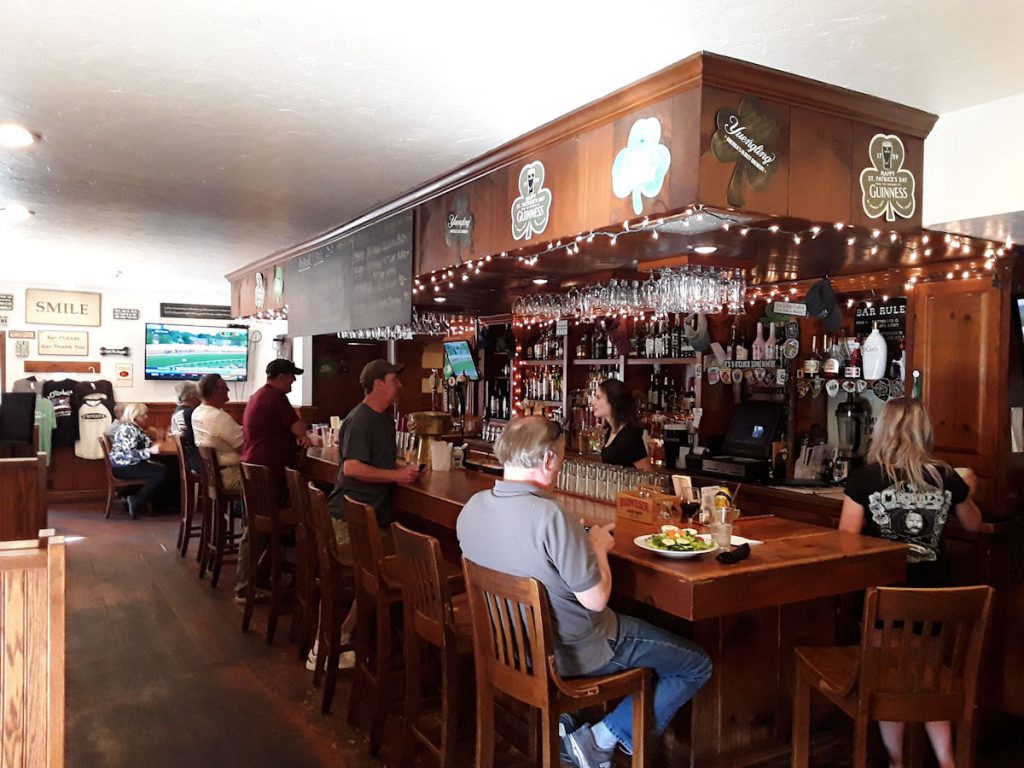
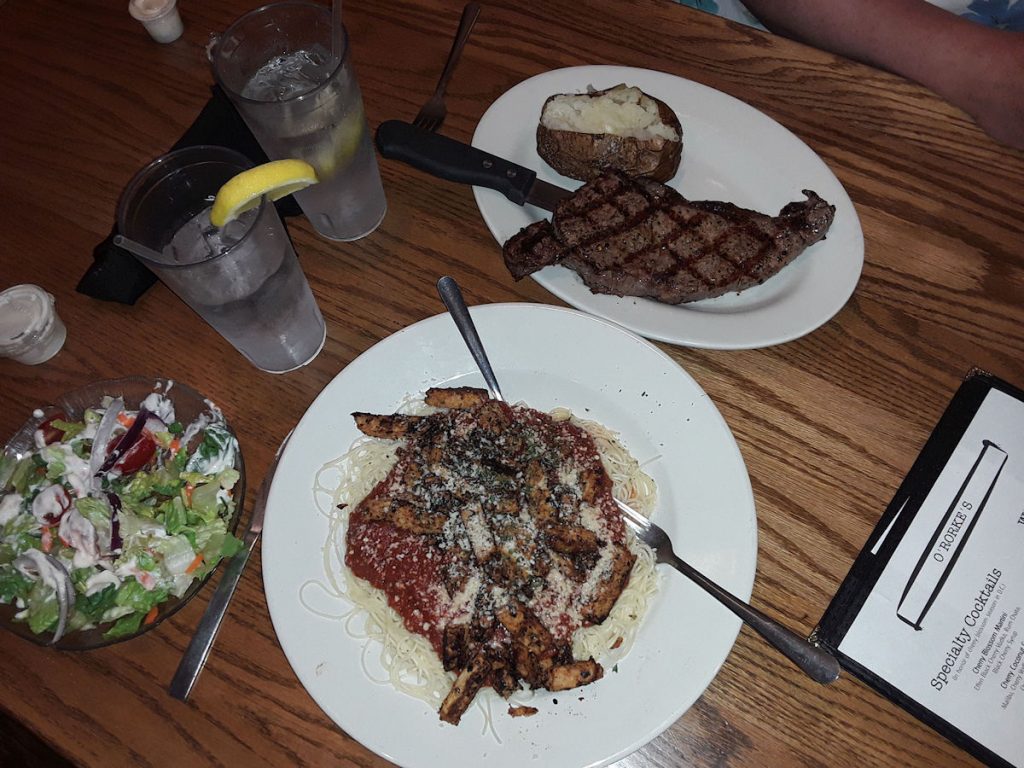
Prices were very reasonable, too.
After dinner, we drove back to Cemetery Ridge and took some evening photos.
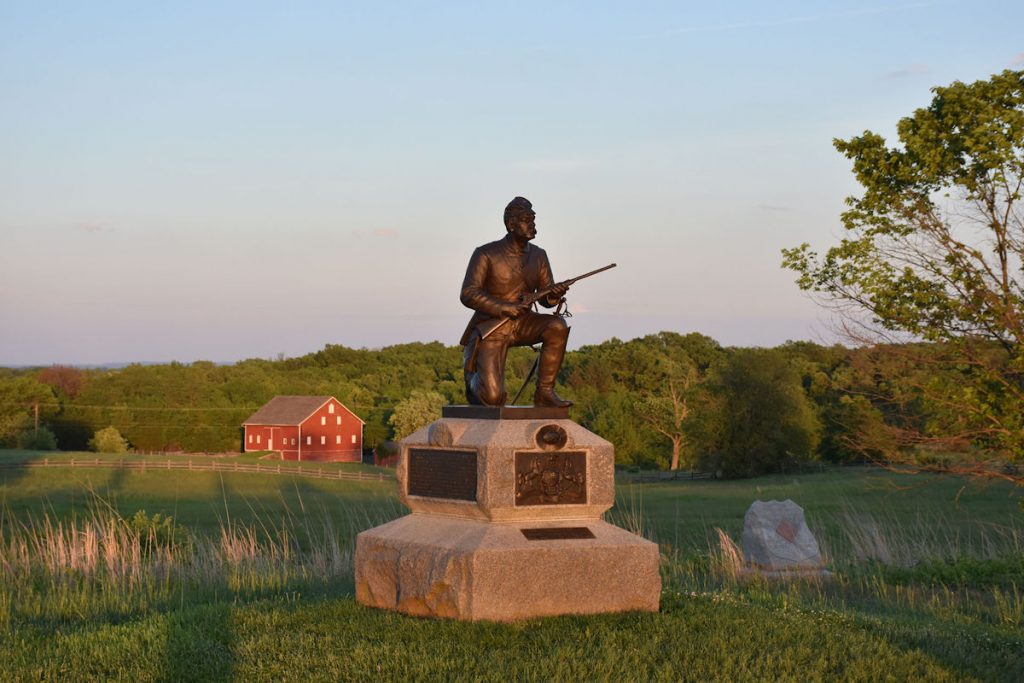
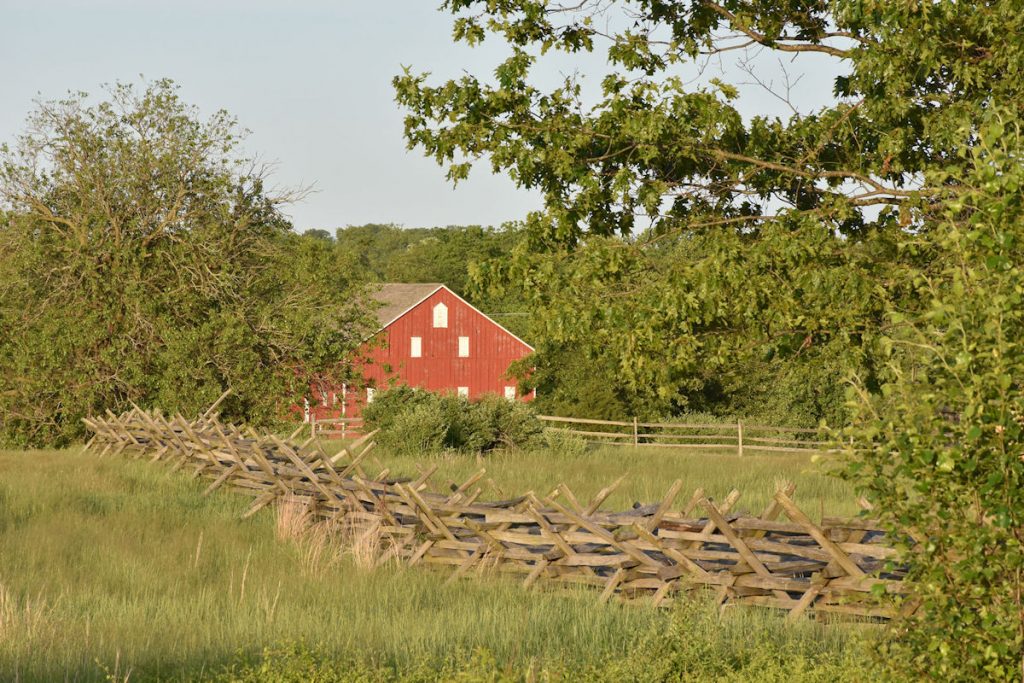
The next morning, we enjoyed a great breakfast at the hotel, then headed home to Morgantown.
We decided to take the back roads and avoided the interstate the first couple of hours.
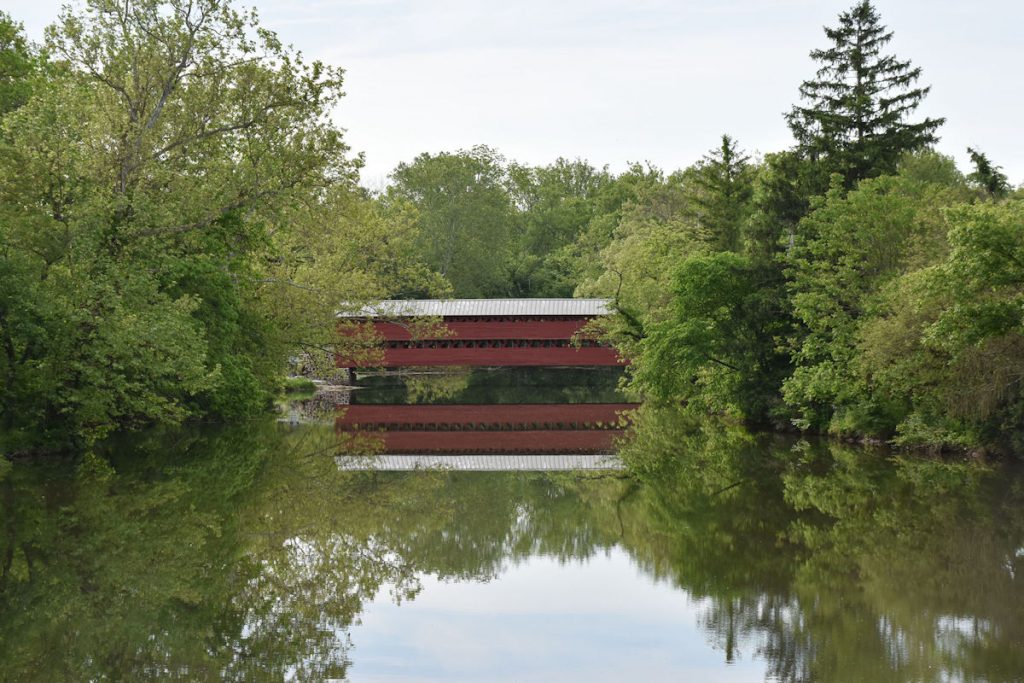
Union and Confederate forces used this bridge at various times, including Lee’s retreat.
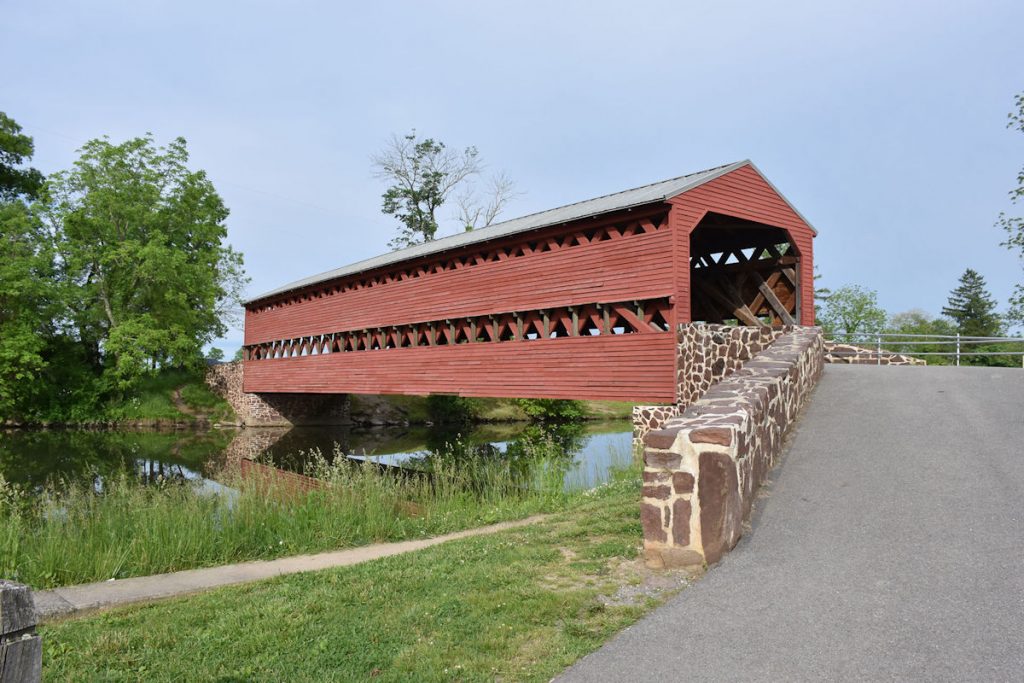
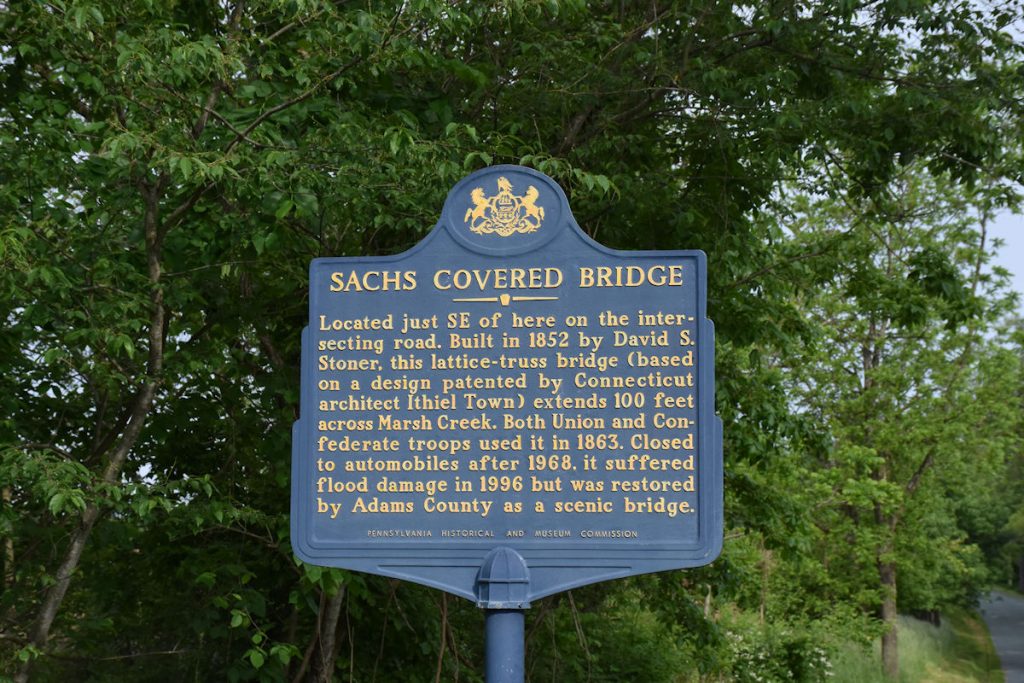
Taking the backroads west out of Gettysburg, we followed the Scenic Highway through Orrtanna and Cashtown.
We were surprised to see mile after mile of apple and peach orchards on every hillside. Beautiful!

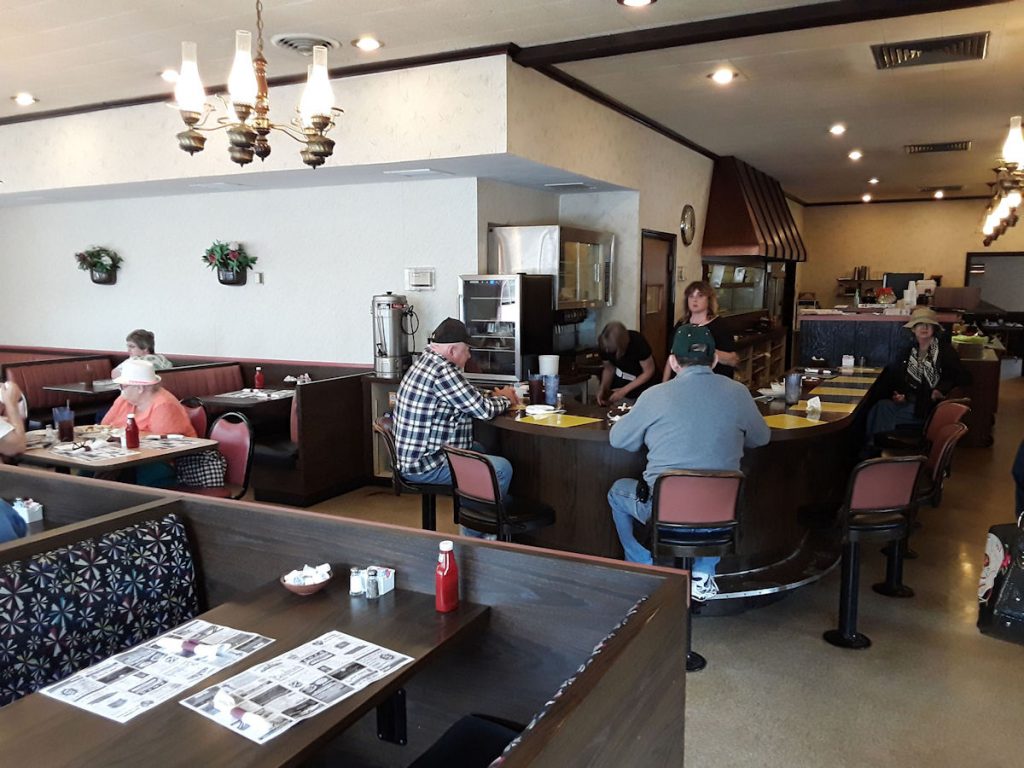
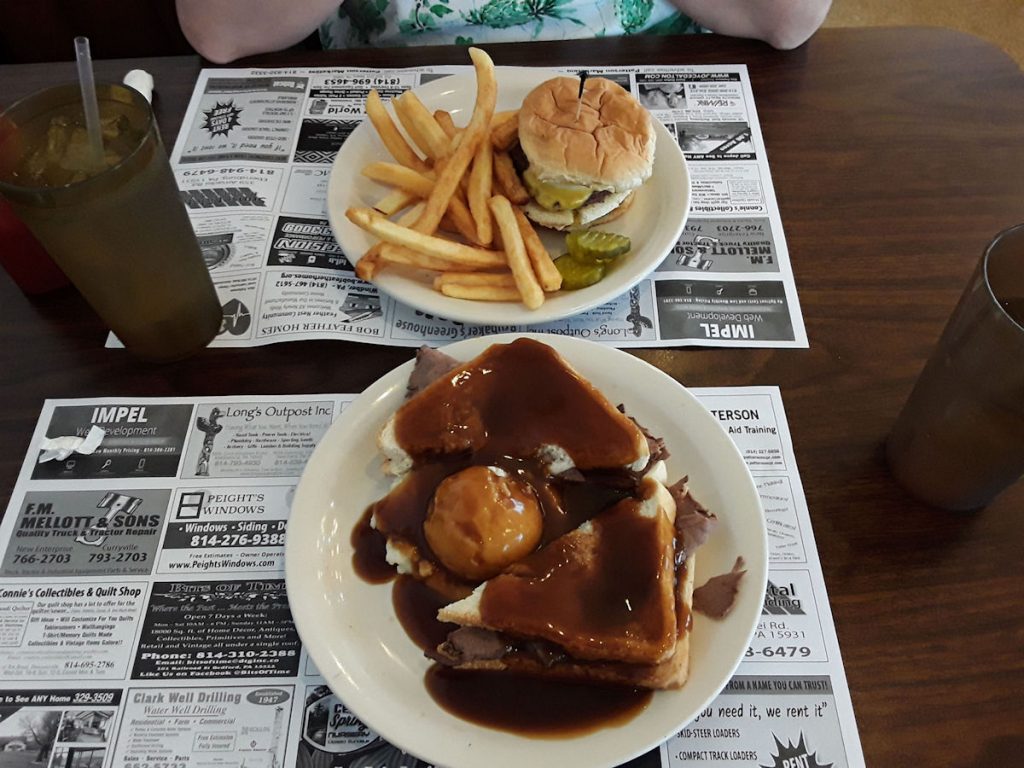
After that great lunch, we were both ready for a nap, but managed to stay awake for the 2-hour ride home.
We hope you enjoyed joining us for our visit to Gettysburg!
